Vegetable planting calendar: a monthly guide for your plot
Growing your own fruit and veg is simple with our handy vegetable planting calendar, so check out what crops to sow and grow each month
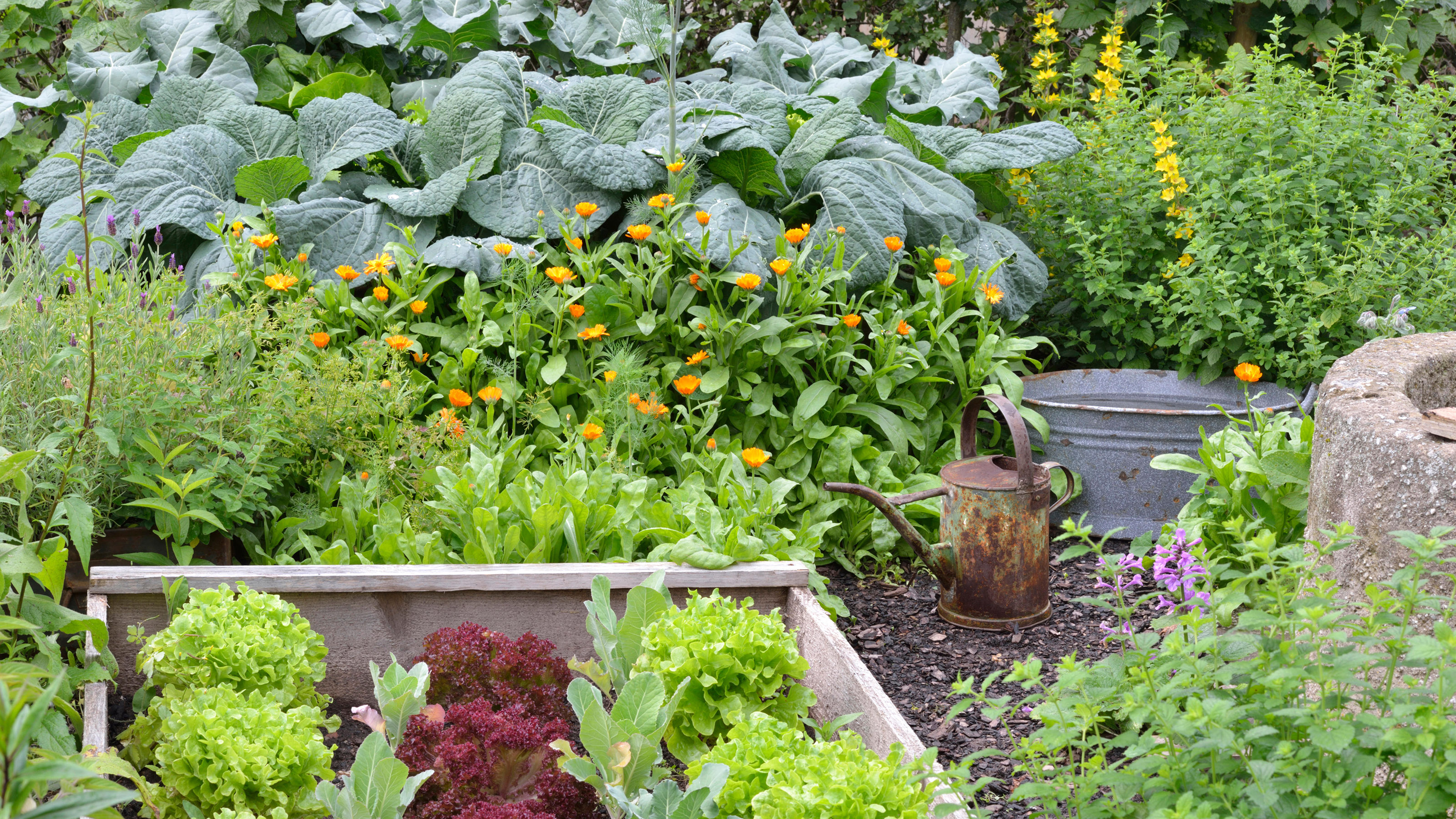

There's a lot to get your head around when it comes to the vegetable planting calendar. But knowing when to plant and when to harvest is key to ensuring you get the best from you vegetable garden and that you don't miss out on growing your favorite edibles.
Another great benefit of being more in tune with your plot is that it will enable you to try growing fruit and veg from seed. A far less expensive way of doing it than buying plug plants at a garden centre. Which is fine to do of course, if you've missed the sowing season, or if you're an inexperienced gardener.
For me, planning is absolutely the key to success, so before you pick up your trowel, reach for a pencil and start jotting down your ideas. It seems like an obvious thing to say but make a list of your favourite veg. There's no point making things part of your kitchen garden ideas unless you like to eat them and use them regularly in dishes.
Then look at which month you should be sowing the seeds and what care is needed between sowing and harvesting. Remember that every failure is a lesson, and even if some crops don't work out the way you wanted, there's always next year to try again.
Plan for the year ahead with our vegetable planting calendar
Take time to plan a vegetable planting calendar for what you’re going to grow this year before ordering anything. Look through catalogues and visit the websites of specialist nurseries, and order veg seeds or plug (baby) plants for planting out later on. Then jot these on your calendar so you can stay on top of dates.
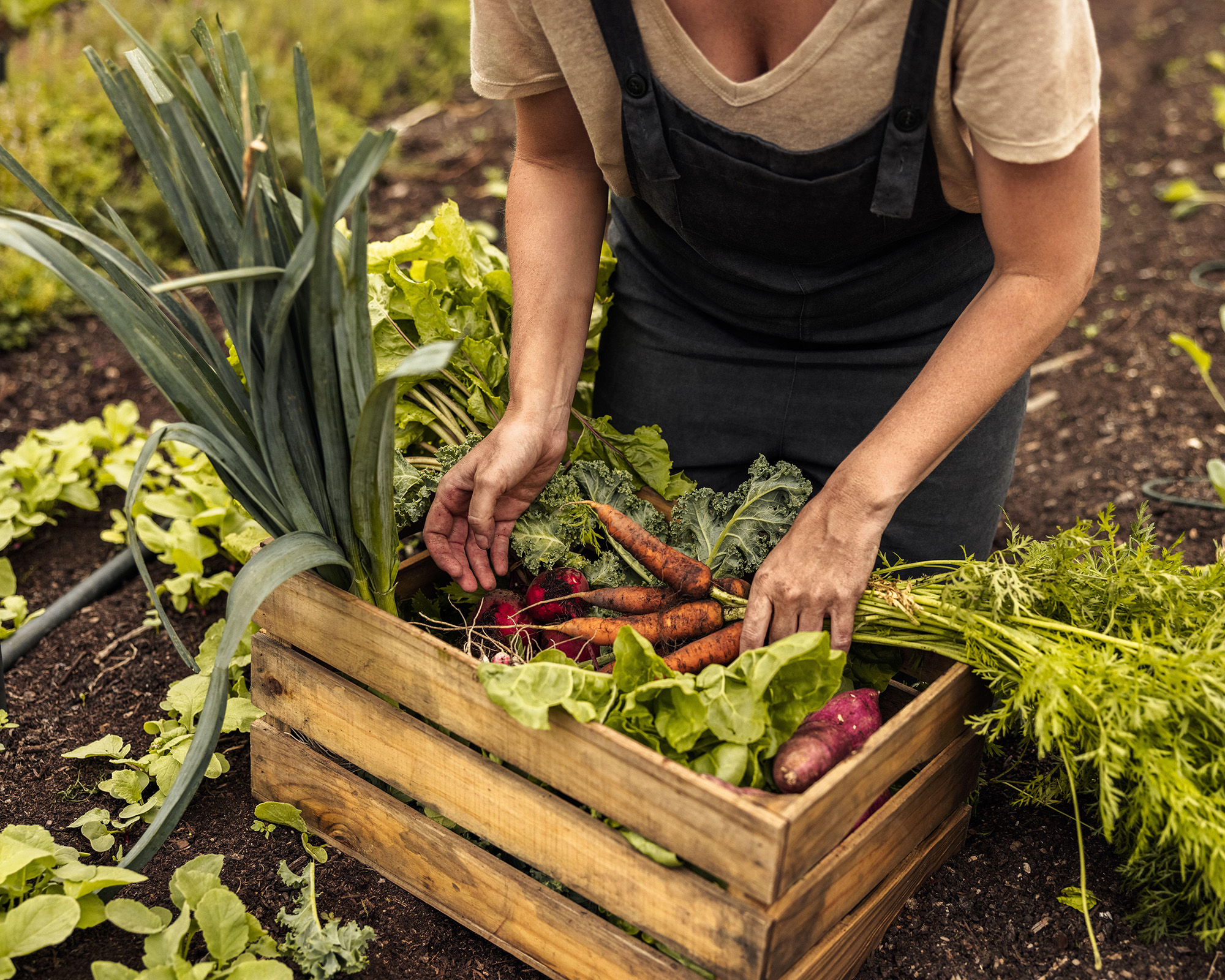
January
The beginning of the year is the perfect time to look at the design of this season’s veg plot. A little careful planning now will save you time and maximize your space for the growing season ahead. Draw up a basic sketch of your growing area to go in a sunny patch in your garden. Ask yourself if there's an area of lawn which could be turned into raised garden beds for veg.
Then think about what veg you want to grow and start doing some research about timings. Making these plans for your vegetable planting calendar now will allow you to maximize and increase productivity and enable you to order the necessary seeds early, avoiding later disappointment of finding you've missed your planting window!
Think about new techniques like crop rotation which will help improve the health of your veg and avoid build-up of pests and diseases. Crop rotation means growing different kinds of veg in their own section, and changing them every year. For example, brassicas should go where peas and beans grew last year. Peas and beans should grow where you had potatoes, potatoes where you grew root veg and onions previously, and so on.
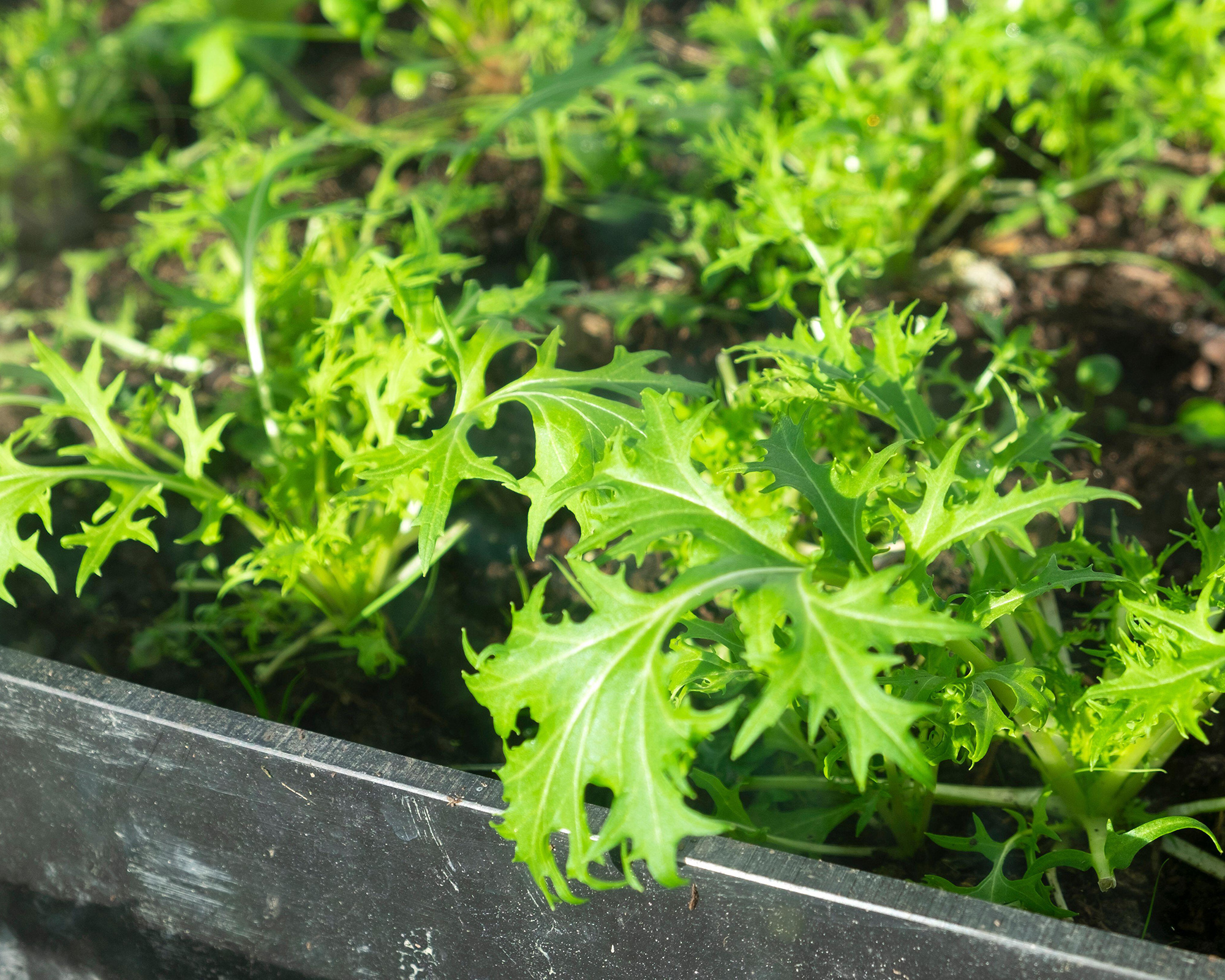
January planting list
- Potatoes: If you're learning how to grow potatoes, use a clean, shallow seed tray or a collection of egg boxes and a light, frost-free position such as a sunny windowsill. Stand the individual tubers in the tray, ideally with the ‘rose’ end uppermost – this is the end with the most eyes. Within just a few weeks, sturdy short ‘chits’ will develop. You can plant your chitted tubers into pots in a heated greenhouse in January, or into the earth in mid to late March. Take care not to knock off the chits when planting.
- Mizuna and oriental leaves: Ideal for a small space, sow into short drills in the ground or pots, thinning out plants to 2in (5cm) apart. Ready to pick in 3-4 weeks and crops for months. Grow under horticultural fleece to protect against flea beetle.
- Onions: Bunching onion ‘Ishikura’ will get off to a good start in an open, sunny site with free-draining soil. If your soil is poor, apply organic chicken-manure feed before sowing and rake through.
January picking list
- Winter salads: If you have been growing lettuce in winter, continue to harvest Oriental mustard leaves, taking some little and often, leaving the outer leaves to give the plant energy to shoot again.
- Kale: Snap the tender new leaves to encourage the plant to form side shoots, as a cut-and-come-again crop.
- Cabbage: Crinkly Savoy and colourful January King cabbages are a winter staple and have bags of flavour. For reliable and tasty Savoy-like crops, try ‘Wintessa’ or ‘Endeavour’. Alternatively, the vibrant ‘Deadon’ is an attractive and delicious January King variety. There are plenty of tips on how to grow winter brassicas in our dedicated guide.
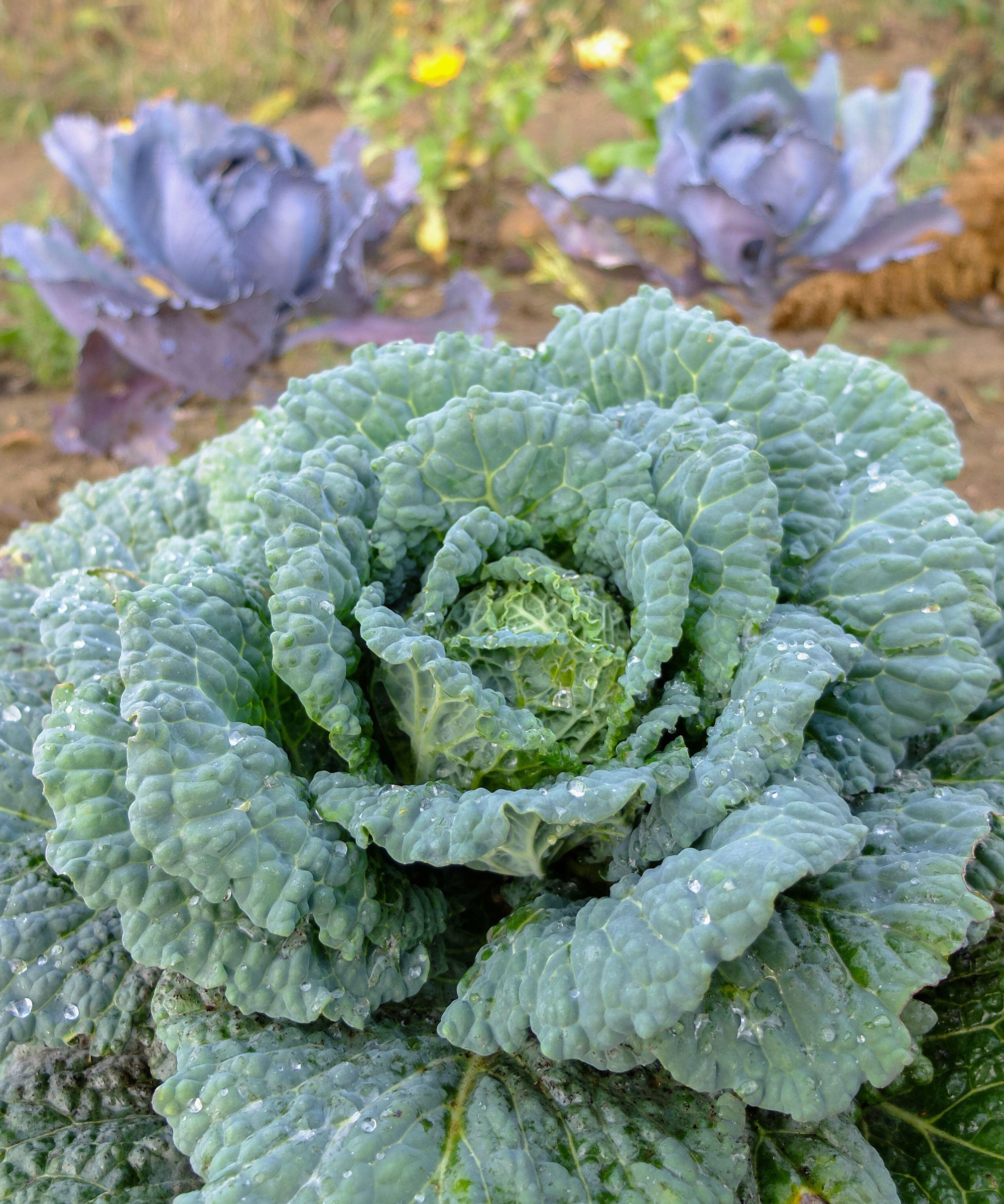
February
Finish digging over borders to prepare for this year’s sowings. Cover the soil with horticultural fleece or cardboard to warm it in preparation for the growing season.
For this month's vegetable planting calendar, you can start early varieties of potatoes now by ‘chitting’ new potatoes. Good varieties are ‘Charlotte’ and ‘Nicola’. Pop them upright in an egg box on a light windowsill, so they grow little shoots before you plant them out next month.
Start sowing crops indoors. Peppers, tomatoes and eggplant can be started off around now and they all need warmth, so place them in seed compost in a propagator or heated greenhouse at 70˚F (18-23˚C) degrees.
If you have a suitably sunny, sheltered spot outdoors, you can learn how to grow tomatoes from seed. Raising from seed gives you a better choice of varieties, particularly with bush types which are the easiest to grow. The variety ‘Totem’ is dwarf and will provide an early crop, while Tomato F1 ‘Summerlast’ is disease-resistant. Both are good for growing in containers. You can start the seeds off in a heated propagator or on a bright windowsill. Keep the seedlings indoors in a well-lit spot and repot into larger containers when plants are 15cm tall. Acclimatize them to outdoor conditions ready for planting into pots or growing bags two weeks after the last frost.
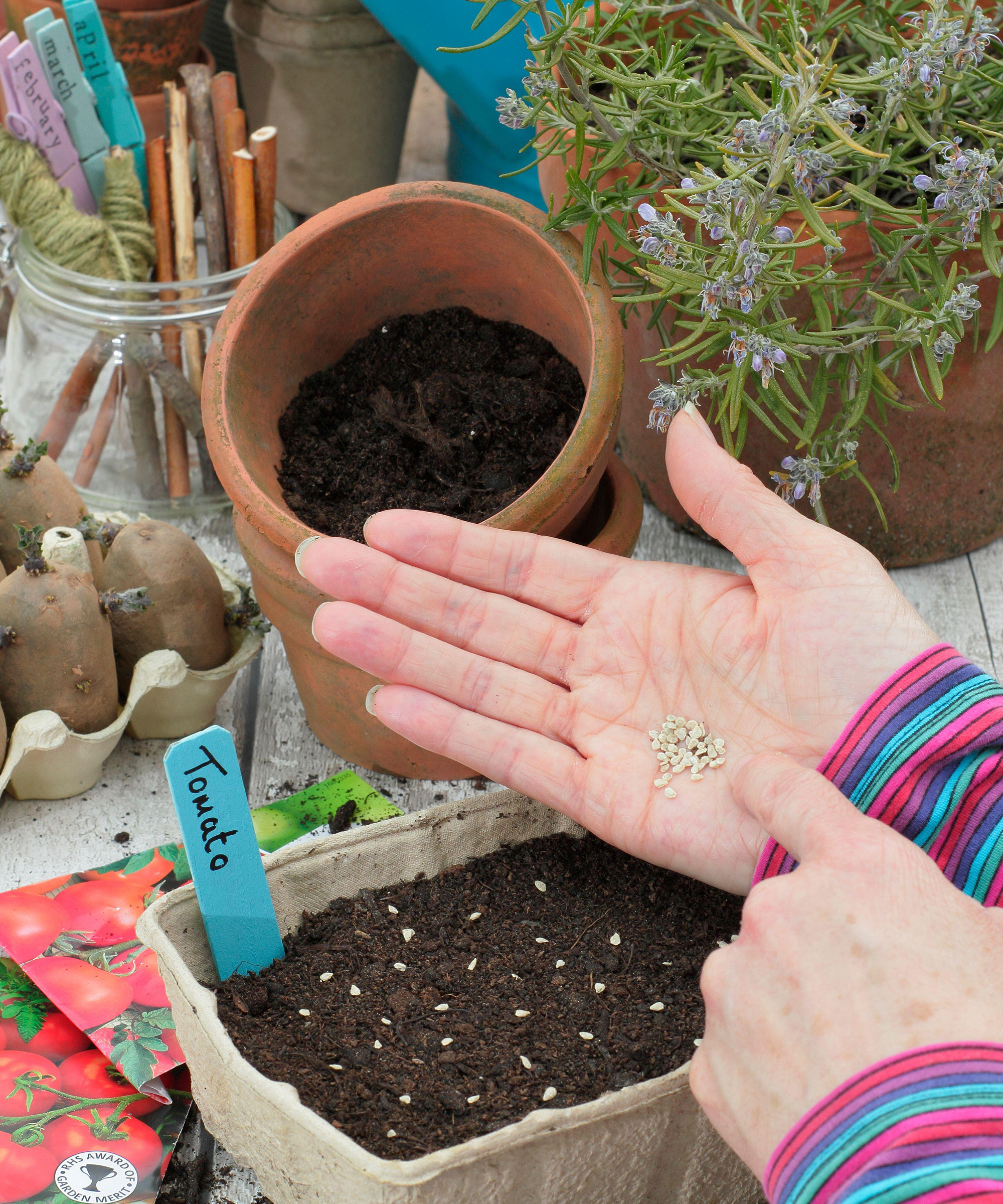
February planting list
- Carrots: In February, sow variety ‘Adelaide’ into pots in a greenhouse or direct for an early harvest of sweet baby carrots. There are more tips in our guide on how to grow carrots.
- Eggplant: A long season is needed if plants are to flower and fruit properly by the end of summer. For best results grow in a greenhouse or polytunnel. Choose a variety like Black Beauty which fruits early.
- Tomatoes: You can start seed off from mid-February to April in a heated propagator or on a bright windowsill.
February picking list
- Sprouting broccoli: Harvest the main spike first to encourage branching, then cut the side shoots later. Do not allow the plants to form flowers. Cropping can continue for several weeks.
- Herbs: Pinch out a small amount of culinary herbs, such as thyme, bay and rosemary, for cooking.
- Leeks: Continue to harvest leeks as needed if the ground is not frozen. Cut off the roots and leaves and slice lengthways, then wash out any grit by holding under a running tap.
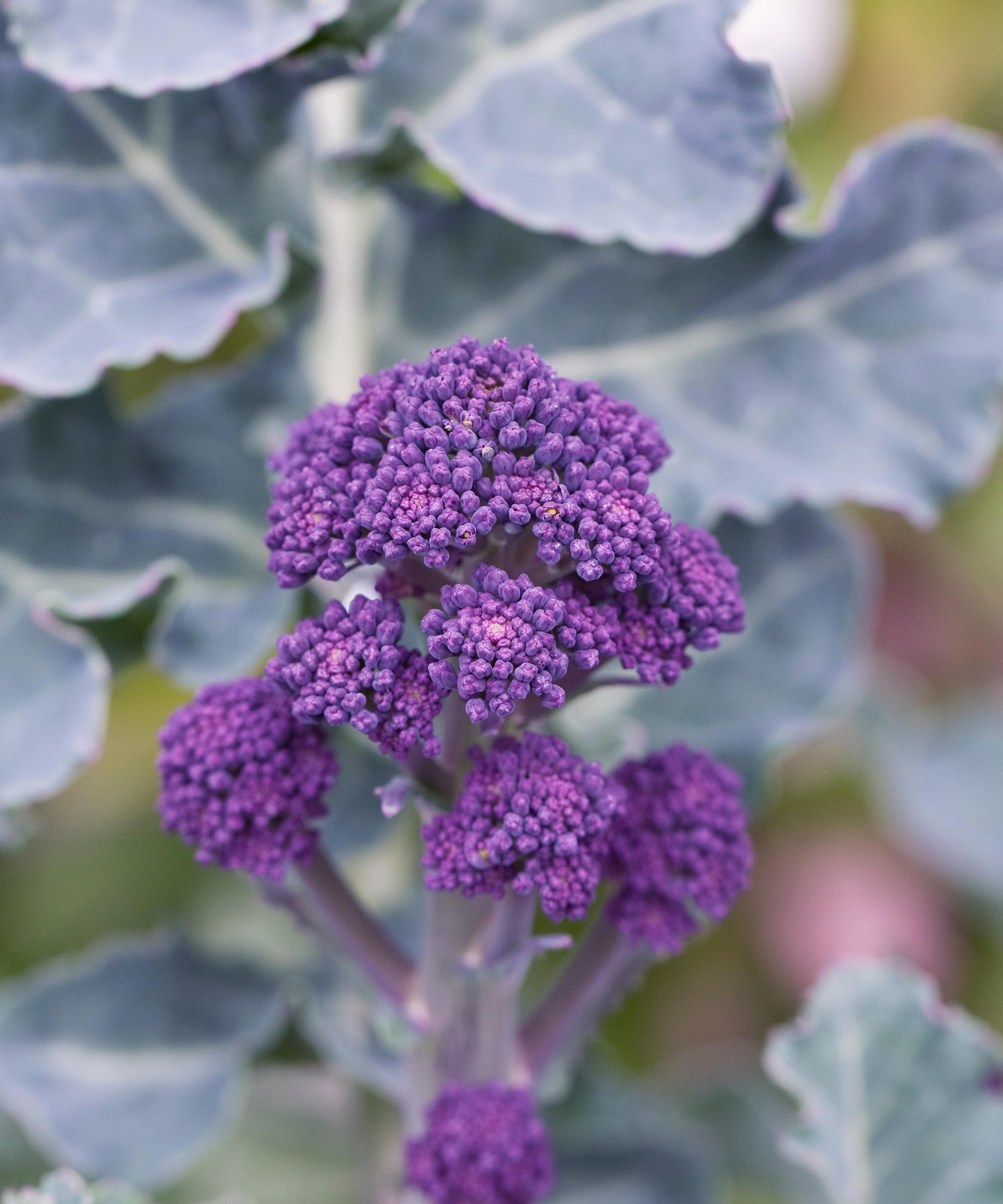
March
There’s still time to start tomatoes, eggplant and peppers from seed. Sow them thinly into pots or trays; place them on a bright windowsill or propagator, alternatively, buy plug plants. Others that you can start indoors include leeks, beetroot, onions, peas, carrots, cucumber, salad leaves and brassicas.
If you live in a milder region or your soil is sandy you can sow many crops outdoors now, for example, carrots, broad beans and chard, but remember to protect with fleece.
Heavy soil types, which stays colder for longer, needs warming with cloches first. Onion and shallot sets can be planted, and if you're planning on growing vegetables in pots, early seed potatoes can be started in containers.
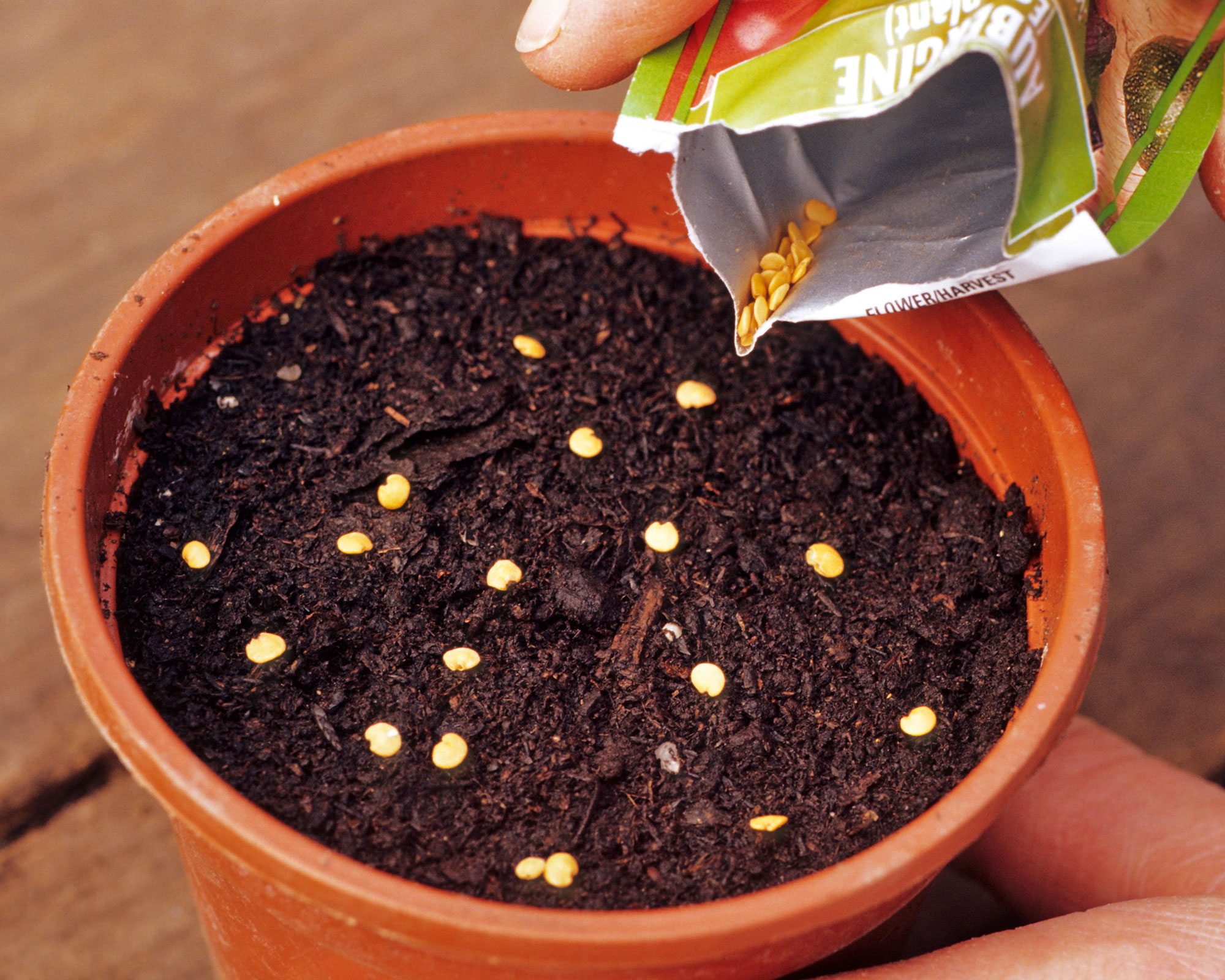
March planting list
- Asparagus: One of our top tips for how to grow asparagus is to soak the seeds overnight in a mug of water to help soften the hard outer seed coat. Sow one seed per 1.5in (4cm), 0.5in (2cm) deep. Label and water in well.
- Spring onions: Sow from early March – earlier under cloches or fleece. Keep sowing every two or three weeks until mid-summer for a continuous crop.
- Strawberries: When learning how to grow strawberries, they be planted any time from March to May. Either plant a few plants in an empty spot or invest in a small raised bed. You can also buy strawberry pots, which look great but require plenty of watering.
March picking list
- Parsnips: Can be left in the soil over winter and harvested when needed.
- Kale: Grown in autumn, the flavour is better after the leaves have been frosted.
- Wild garlic: Foraged from woodland, you’ll likely smell it before you see it. Ready for harvest in March when the young leaves are tender.
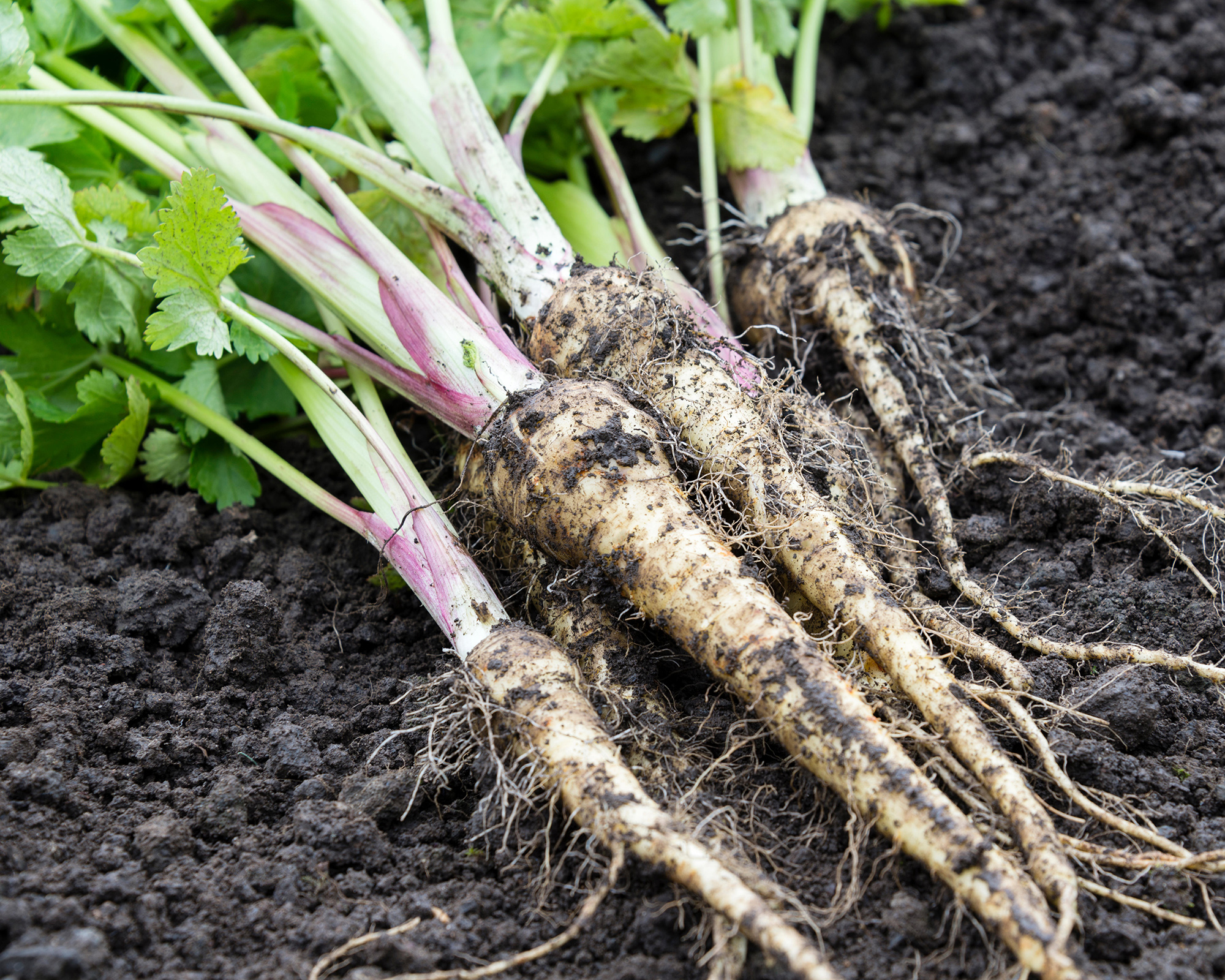
April
A useful addition to your vegetable planting calendar is to draw out a planting plan on paper as you sow seeds so you know what is growing where in your potager garden. And add plant labels with the dates that seeds were sown. In April, vegetables like beetroot, broccoli and carrots can be sown directly in the ground. If the weather is cooler, you can still sow tomato and courgette seeds in seed trays but keep them in a heated greenhouse or propagator.
If you have established asparagus growing, harvest from mid-April onwards. When late frost is expected, protect fruit blossom with fleece and feed fruit trees to grow in pots, bushes and raspberries with a fertilizer around the base of the plants.
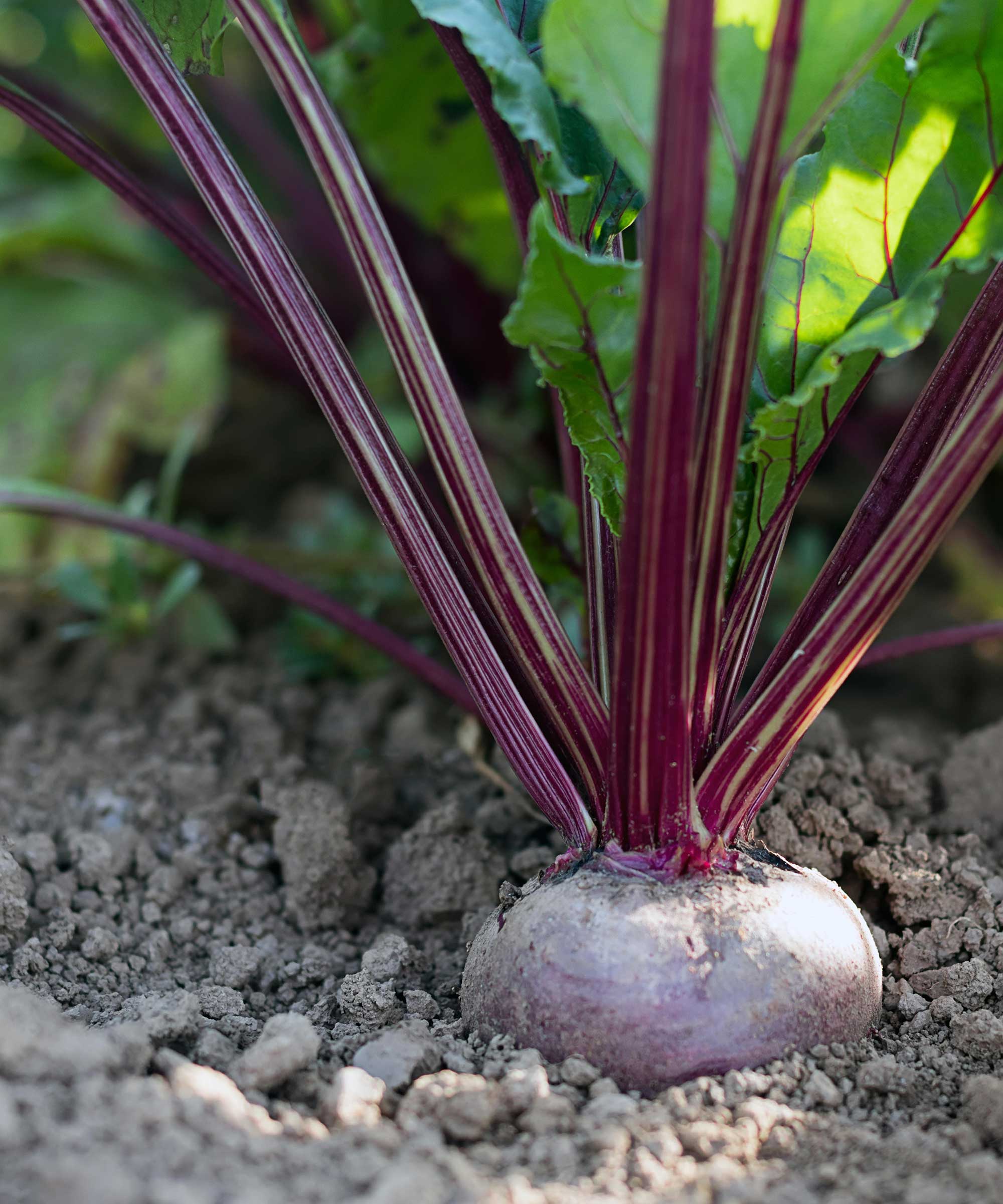
April vegetable planting list
- Spinach: For best results with how to grow spinach, sow a couple of rows in a raised bed now, then keep sowing a couple of new rows every two weeks till June for handfuls of fresh spinach.
- Peas: April should be warm enough to sow straight into the ground. You’ll need a frame, netting or short sticks to train them up. Plant a couple of seeds every 4in (10cm) around the base of the supports.
- Fruit bushes: Now the soil has warmed up, it’s the perfect time to plant fruit trees and bushes. For planting in the ground, try gooseberries or a small fruit tree like cherry. For blueberries, containers are best as you’ll need to use ericaceous compost.
- Brussel sprouts: Sow Brussels sprouts now so they will be ready for harvesting in time for Christmas. There's lots of tips in our guide on how to grow Brussels sprouts.
April vegetable picking list
- Asparagus: Can be harvested at around the middle of the month.
- Spring onions: These are ready to harvest when they are the width of a pencil.
- Rhubarb: This fruit should now be ready: twist stems from the crown and remove the leaves from stem before eating. Young stems are tasty raw, peeled and dipped in sugar.
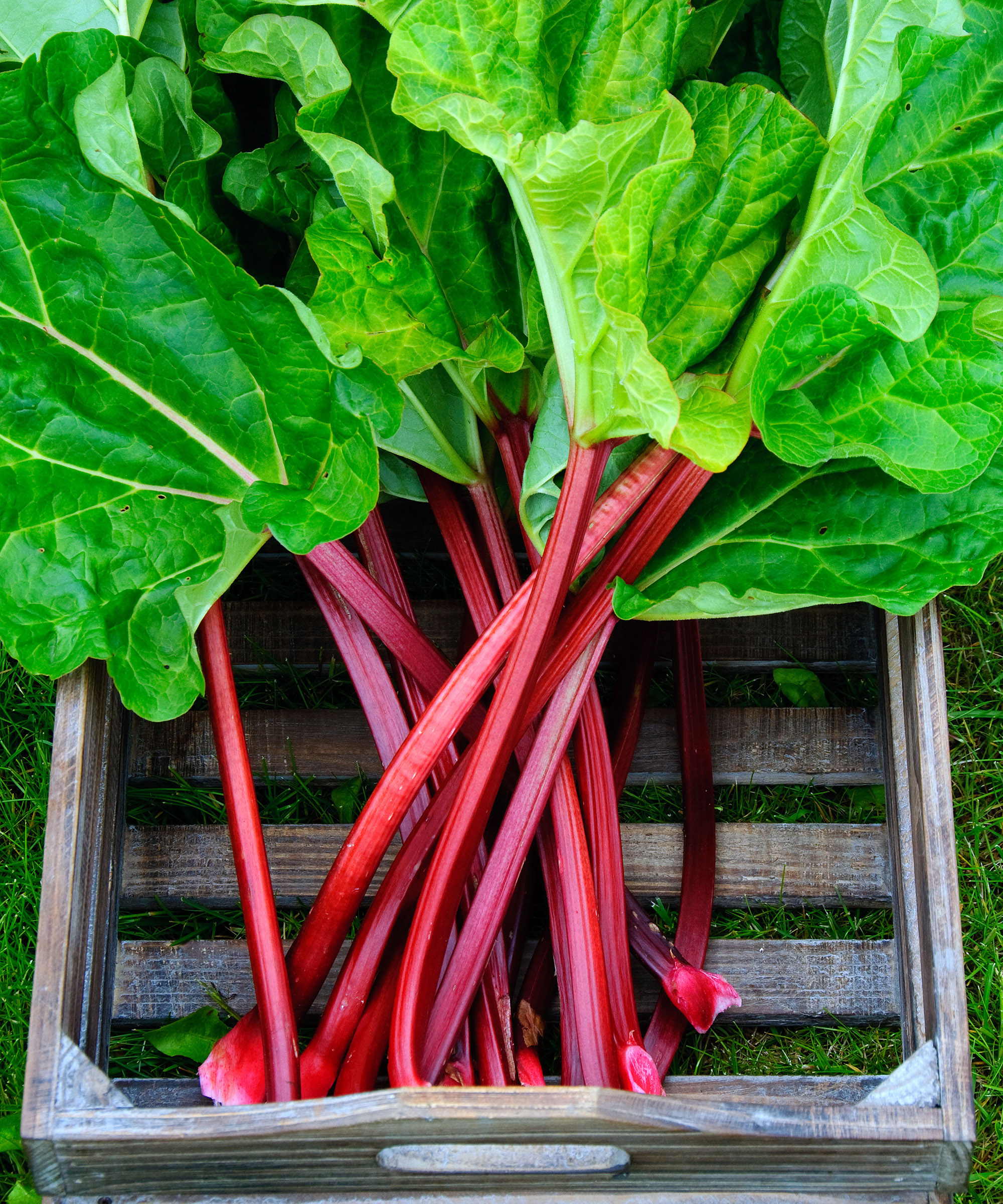
May
Lay straw between your strawberries to prevent the fruit from getting moldy and tie in raspberry canes regularly as the growth speeds up.
Some of the best herbs to grow in your garden include parsley and coriander – sow them now at three weekly intervals for a constant supply through the summer.
Thin out beetroot and carrots, giving seedlings plenty of room to grow. Sow lettuce seeds regularly for a steady supply throughout summer and begin hardening off courgette and tomato plants outdoors as the weather warms up before planting out early in June.
It's important that you know when to harvest veg correctly too. For example, when growing rhubarb it should be harvested regularly from now, but only take up to a third of stems so you don't weaken the plant.
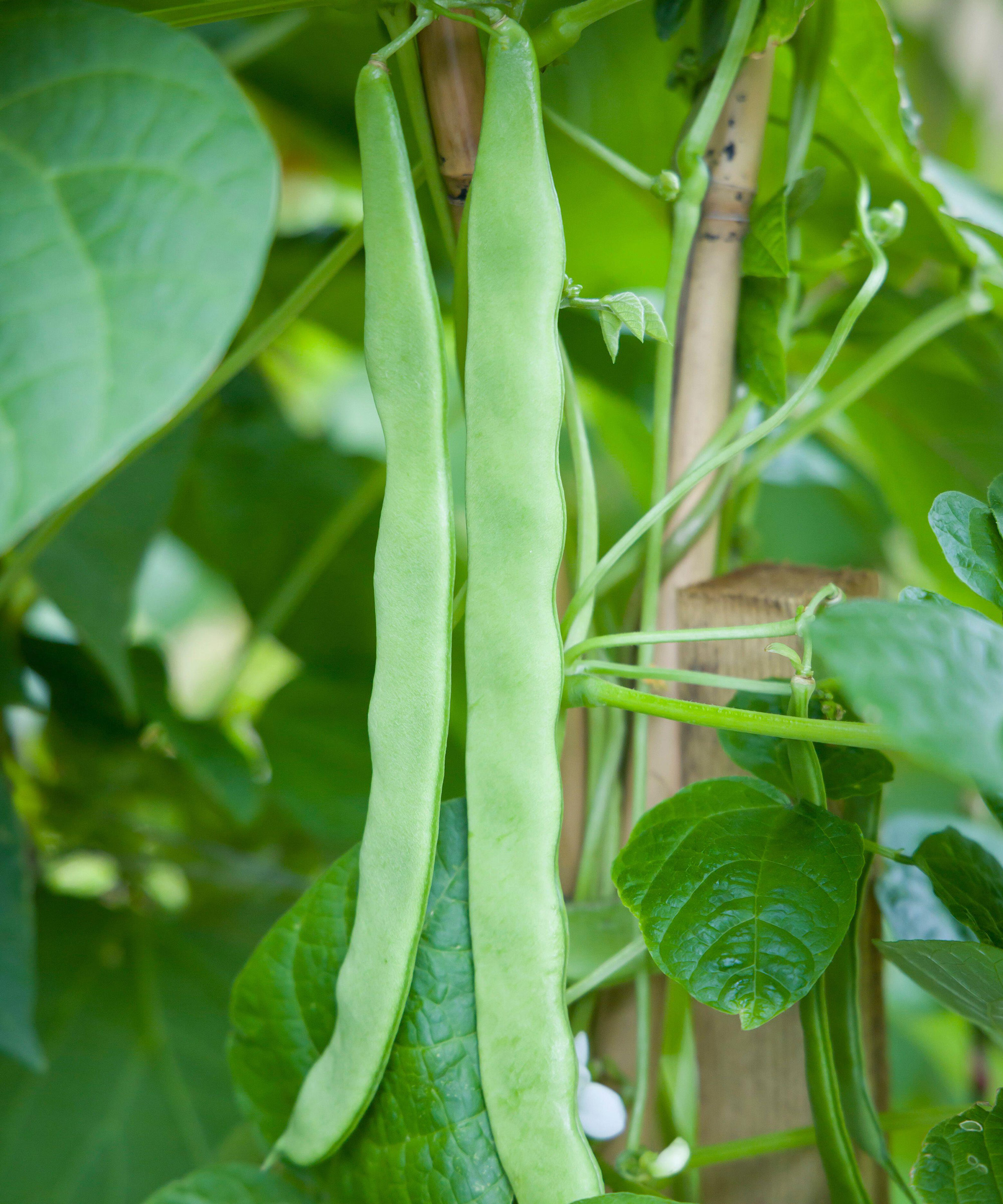
May vegetable planting list
- Courgettes: Sow seeds individually in 2.5in (7cm) or 3.5in (9cm) pots of seed compost. Keep them in a protected place like the kitchen windowsill and plant out after all danger of frost has passed.
- Sweetcorn: You can sow direct from now on, although it’s safer to start plants off in individual pots putting them out later.
- French beans: Any plants you’ve started off under cover can be planted out, and seeds sown into the ground. For the best chance of success with how to grow French beans, simply create or buy a cane wigwam, set it up in the ground or a large pot or raised bed, then plant a couple of seeds about an inch deep at the base of each pole.
- Chard: Direct sow in early May at 4in (10cm) intervals, 2-3 seeds per hole. Once seedlings have two true leaves, thin the clumps to 1-2 plants per spot and to 12in (30cm) between plants and 15in (40cm) between rows.
May vegetable picking list
- Spinach: Treat as a cut-and-come again crop, using medium leaves as needed.
- Radish: It's one of the easiest vegetables to grow and will be sweeter and less hot when home grown. Sow little and often from March-August. Choose a range of shapes and colors: ‘Sparkler’, ‘White Icicle’, ‘French Breakfast’ or ‘Diana’. Leave some to flower for a spicy garnish.
- Oriental leaves: These versatile leaves include Mizuna, Pak Choi and Mustard. They are best sown in early autumn or early spring or they will run to seed. Net against flea beetle.
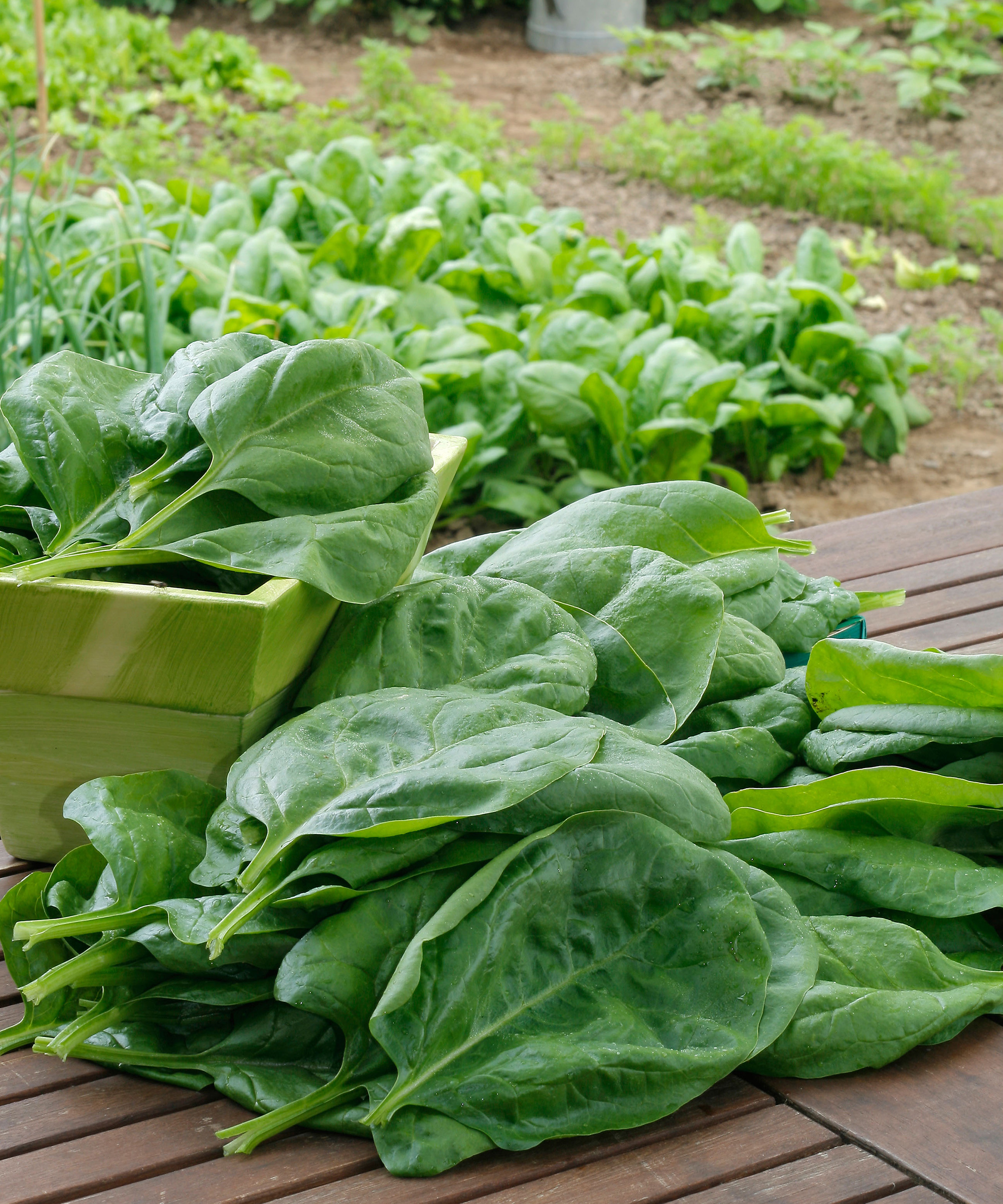
June
It’s the optimum time in your vegetable planting calendar for starting beetroot, annual spinach, radish and salad leaves and herbs such as basil, coriander or parsley. Sow in succession every two weeks into pots before transplanting.
Carrot fly is a nuisance in summer, choose varieties ideal for pots or raised troughs as they will bring the crop above the flying level of this pest. Choose the round ‘Parmex’, ‘Atlas’ or slim-rooting ‘Amsterdam Forcing’. It's a good idea to grow them with the best companion plants for carrots to keep the risk of pest and disease to a minimum.
Harden off and plant out tender vegetables such as runner beans, dwarf French beans, courgettes and squashes and place outdoor tomatoes in a sheltered spot.
Lift autumn-sown carrots, early spuds (ready when flowers open), autumn-sown onions and harvest salad leaves, peas, broad beans, brassicas, leafy greens and the first outdoor courgettes.
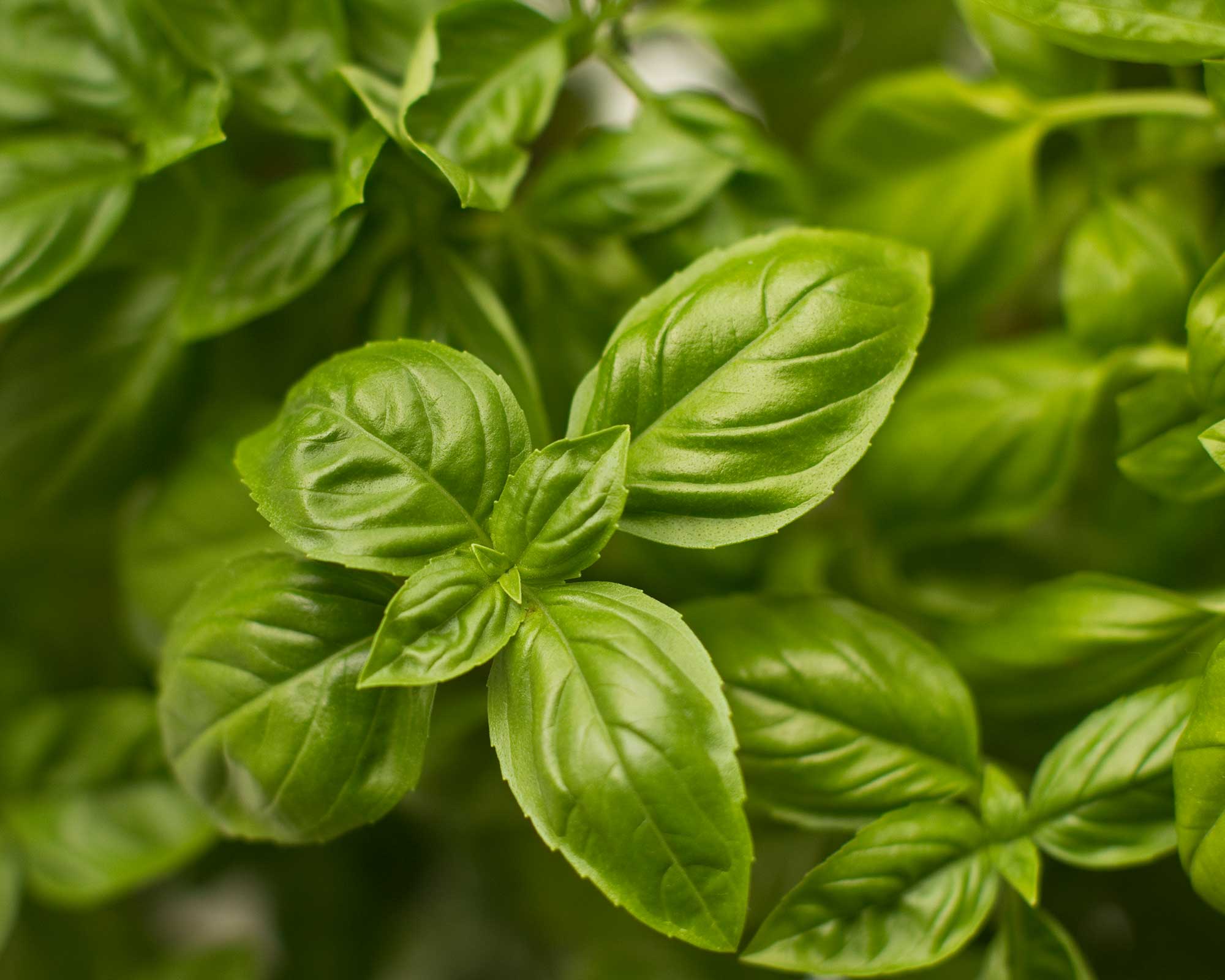
June vegetable planting list
- Beetroot: When learning how to grow beetroot, it's a good idea to soak the seeds in water for a few hours before sowing them in the soil or in pots. Plant the seeds about 0.4-0.8in (1-2cm) apart, 0.4-0.8in (1-2cm) deep. Once the seedlings have formed, thin them out and replant 2in (5cm) apart.
- Carrots: Sow in rows approximately 3in (8cm) apart, and thin out seedlings to one every 2.4in (6cm) once established. Harvest when tops are roughly 8in (20cm) tall.
- Fennel: Best sown in late June in fertile, moist soil. Thin to one plant every 10in (25cm) in rows 18in (45cm) apart, and water during dry spells.
June vegetable picking list
- Broad beans: Once picked, keep in a paper bag in a cool cupboard. They’re at their best picked young, then skinned for cooking.
- Strawberries: Nothing beats the joy of fresh strawberries eaten straight after picking – a true sign of summer! To boost your crop, try planting the best companion plants for strawberries alongside these summer fruits.
- Gooseberries: In June, pick and cook alternate fruits to thin out the crop. Next month’s crop will be larger and sweeter as a result.
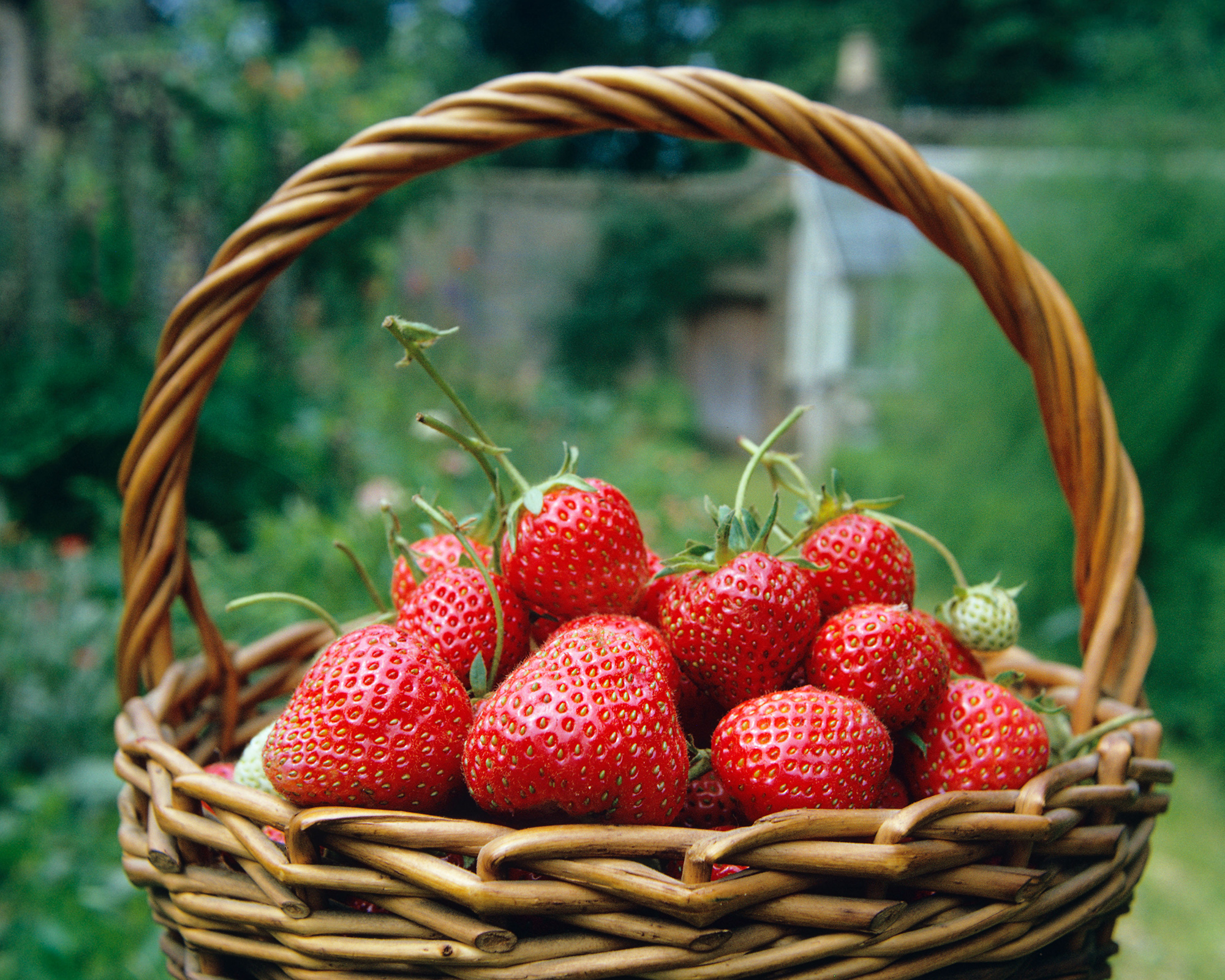
July
Keep sowing small quantities of fast-maturing vegetables to plant in July such as radishes, beetroot, spring onions, sprouting broccoli, and salad leaves (sow the latter when temperatures are not too high, as germination can be poor in hot weather) for a continuous harvest throughout the autumn.
Also sow spinach, Swiss chard, kohl rabi and winter cabbages, which will be ready to pick after your summer and early fall crops have finished.
Many vegetables as well strawberries will be maturing now, too. Cucumbers, tomatoes, and other salad vegetables will be ripening, while runner and French beans will also be ready to harvest – pick these regularly to encourage your plants to produce more crops. Keep all your plants well-watered during dry spells.
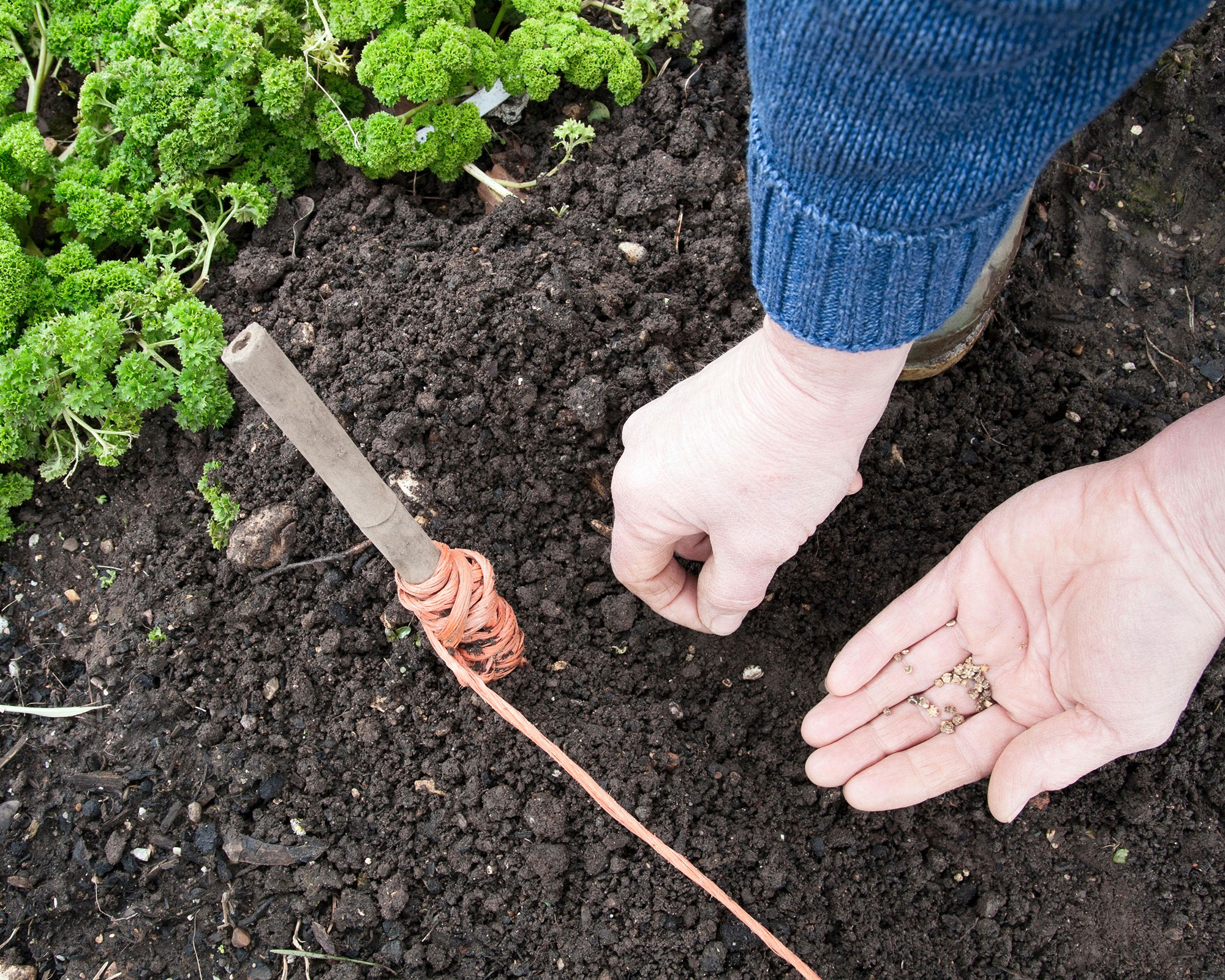
July vegetable planting list
- Arugula: Carefully sow seeds into modules (or try using an egg box) filled with compost. Place in a sunny but sheltered spot and water. Clear some space in you beds or repot them into containers when they’ve begun to sprout.
- Turnips: Enjoy this crop in a matter of weeks by sowing seed thinly, 0.4in (1cm) deep, 6in (15cm) apart, into soil enriched with well-rotted manure or compost. Keep watered. Go for ‘Purple Top Milan’ or ‘Snowball’ to harvest as baby turnips or roast.
- Chard: Sown now in rows 12in (30cm) apart and thinned to 8in (20cm) between plants you’ll get a crop in April with masses of fresh tender foliage.
July vegetable picking list
- Tomatoes: Trusses will be maturing nicely, ready to pick when fully ripe. Check fruits for signs of splitting and blossom end rot. If found, remove and ensure consistent watering to prevent damage. Feed with Tomorite once a week.
- Courgettes: Harvest summer squashes and courgettes while young for the best flavor. Cut off with a knife or the best secateurs to prevent damaging the plant, and use immediately or store in the fridge for a few days.
- Onions: Onions will be ready to harvest around this time. If the leaves have started to droop and yellow, you can tease them out of the soil and leave them to dry out for a few days.
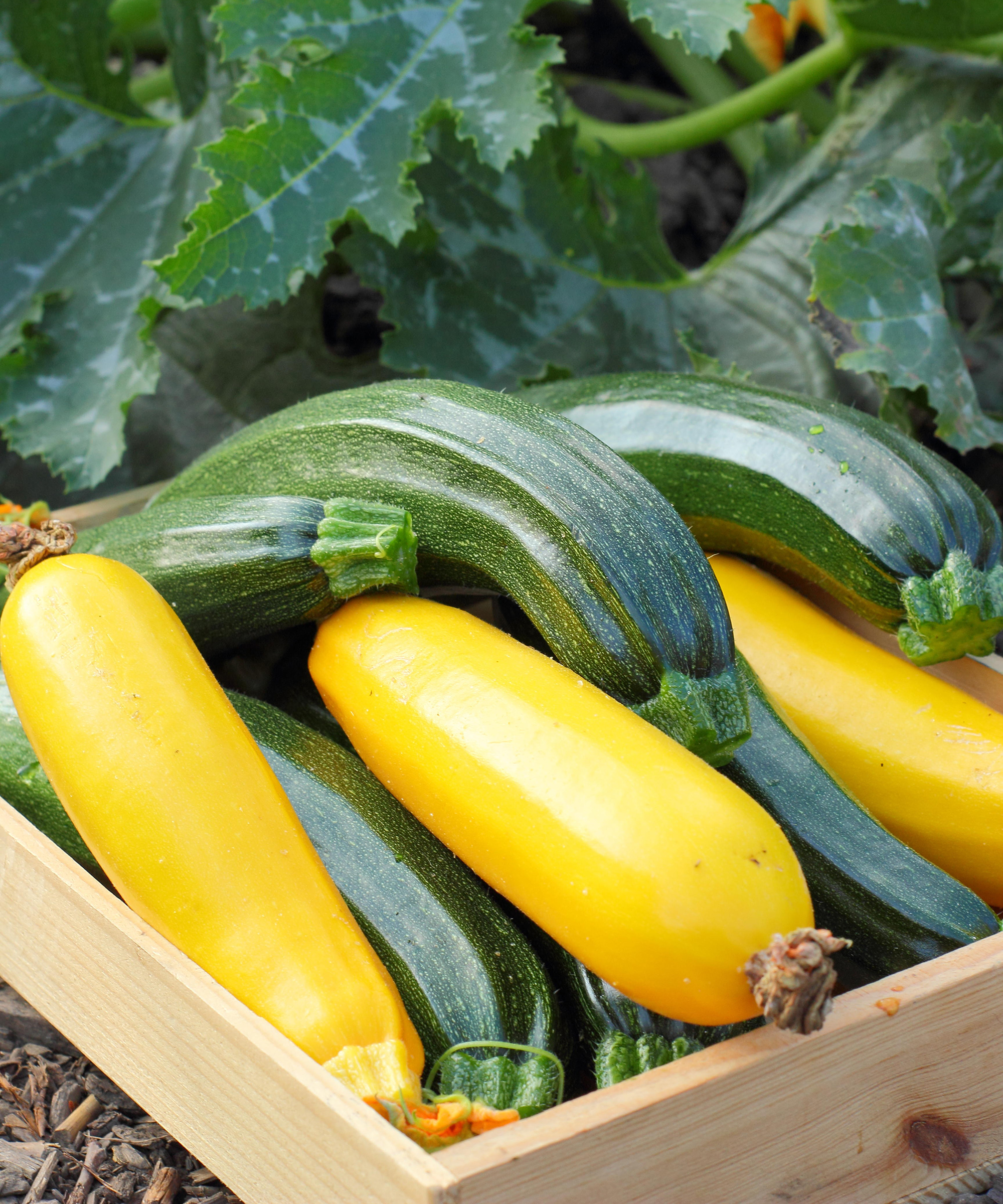
August
The veg garden comes into its own now as you will hopefully be rewarded with a glut of wonderful fresh homegrown crops. It’s important to keep feeding your veg crops right through this month though. Keep feeding your tomatoes and you can also feed sweetcorn with tomato food to get the best cobs, as well as peppers, cucumbers and aubergines.
Lift and dry onions and garlic once the foliage flops over and starts to go yellow. Keep picking French beans and runner beans regularly – the more you pick the more you’ll get. Make sure you pick courgettes before they get too big and lose their flavor. Start harvesting maincrop potatoes and store them in hessian sacks to allow ventilation.
Cut back herbs to encourage a second flush of late summer leaves. Remove any tired and brown foliage from vegetable crops to discourage pests. Watch out for potato blight and tomato blight and remove any affected plants straight away to prevent it spreading.
There are still plenty of vegetables to plant in August too as you can start thinking about planting seeds for fall and winter crops such as spring cabbage, spinach, chard and kohlrabi, as well as winter salad leaves.
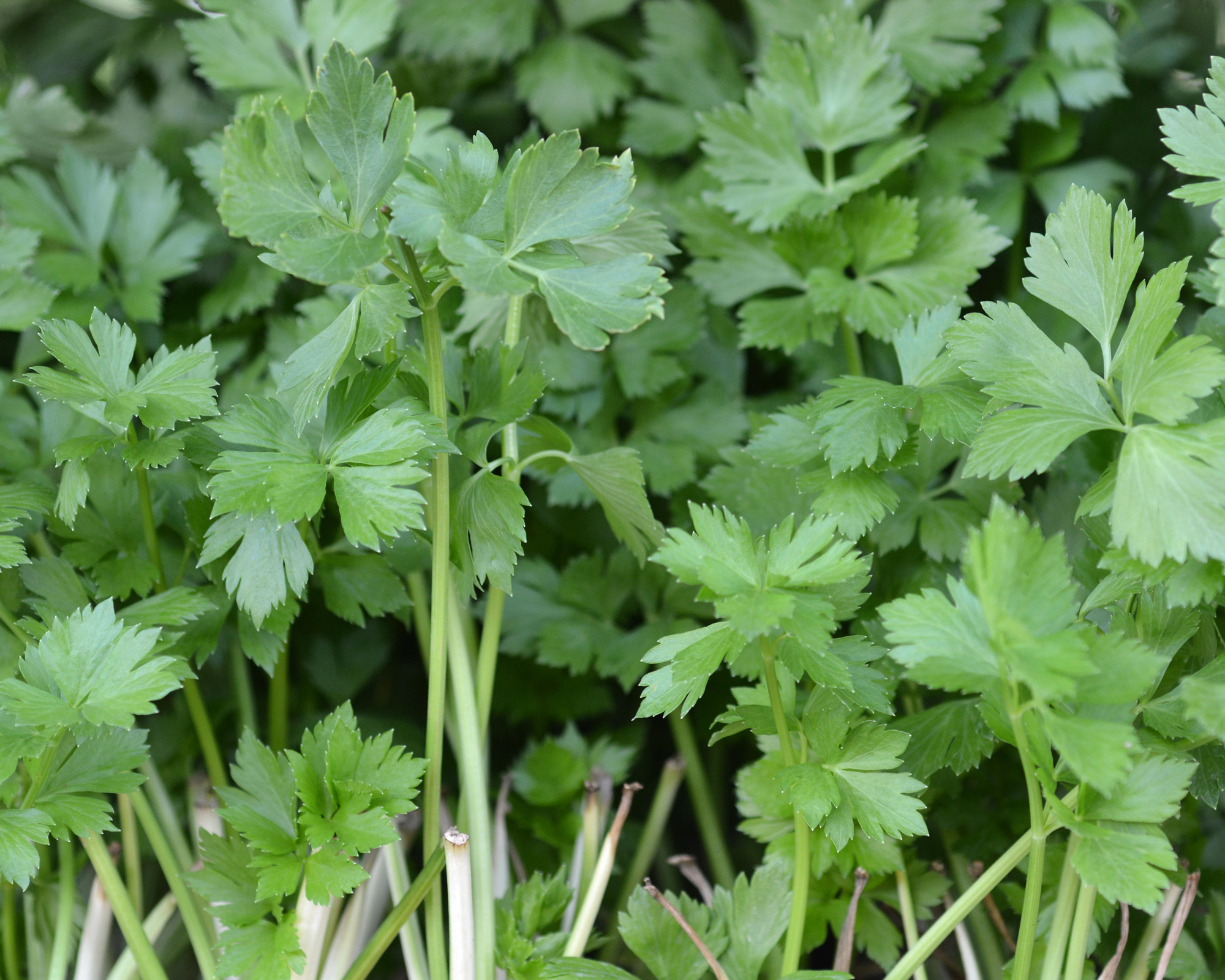
August vegetable planting list
- Parsley: Sprinkle the seeds thinly onto pots of dampened compost, then cover with a thin layer of compost. You can learn how to grow parsley indoors too as seeds will grow well on a kitchen windowsill, where they will be handy for using in cooking.
- Spring cabbage: Try ‘Durham Early’ or ‘Winter Jewel’. Start them off in module trays or sow direct in rows 0.8in (2cm) deep. If buying young plugs, plant 12in (30cm) apart. Net the plants to prevent white caterpillars.
- Spring onions: Sow thickly in August, covering with fleece if bean seed, onion fly or allium leaf miner are prevalent in your region. Sow in rows 10in (25cm) apart in full sun. Feed them in spring with some nitrogenrich fertilizer, chicken manure pellets for example, for lush, tender scallions.
August vegetable picking list
- Sweetcorn: Begins to ripen and if you have sown in late April, mid-May and early June you can expect cobs until October. They relish fertilized soil. Be sure to net against birds however. ‘Lark’ and ‘Sundance’ are reliable, sweet and tender.
- Potatoes: Second earlies and maincrops are usually harvested from July to August. When they are ready, lift tubers on a hot day and leave on the surface of the soil to dry out.
- Garlic: Dependant on variety and time of sowing, garlic will be ready to harvest from June through to August. When the foliage starts to go soft and turn yellow, lift entire bulbs with a garden fork on a hot day and leave on the soil to dry out.
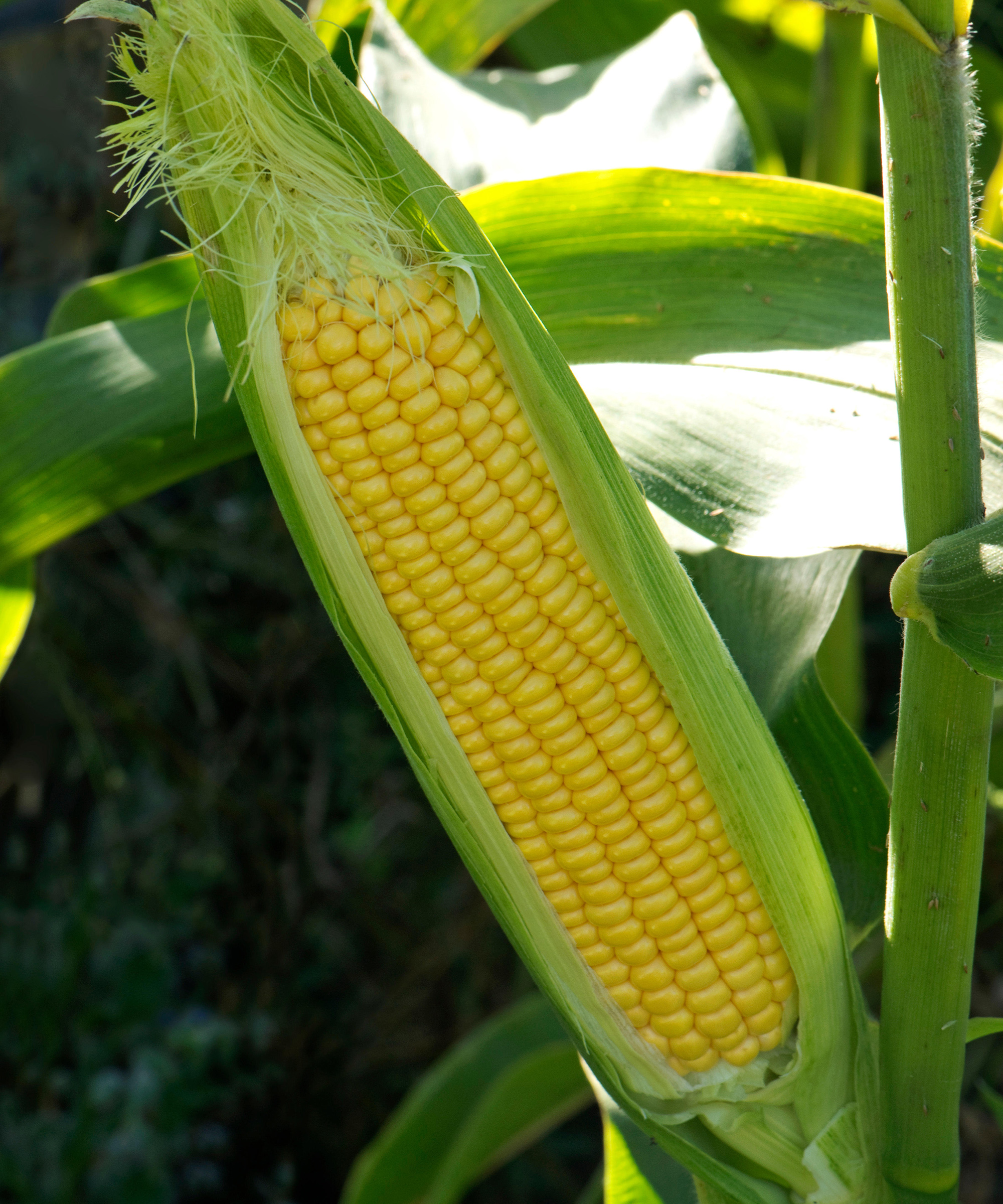
September
Squash, pumpkins, leeks, onions, courgettes, apples, raspberries, plums and more. September is a busy time for harvest! But make some time to sow seeds too and you’ll be enjoying fresh pickings throughout winter and spring.
Lamb’s lettuce, arugula and oriental leaves such as mibuna and mizuna can be sown direct into finely raked soil now; just remember to keep them watered if the weather is dry.
Turnips are another fast-growing vegetable to plant in September as it prefers the cooler weather. Sow them direct and pick them when they’re the size of a golf ball – perfect for roasting or pickling in vinegar which turns them shocking pink.
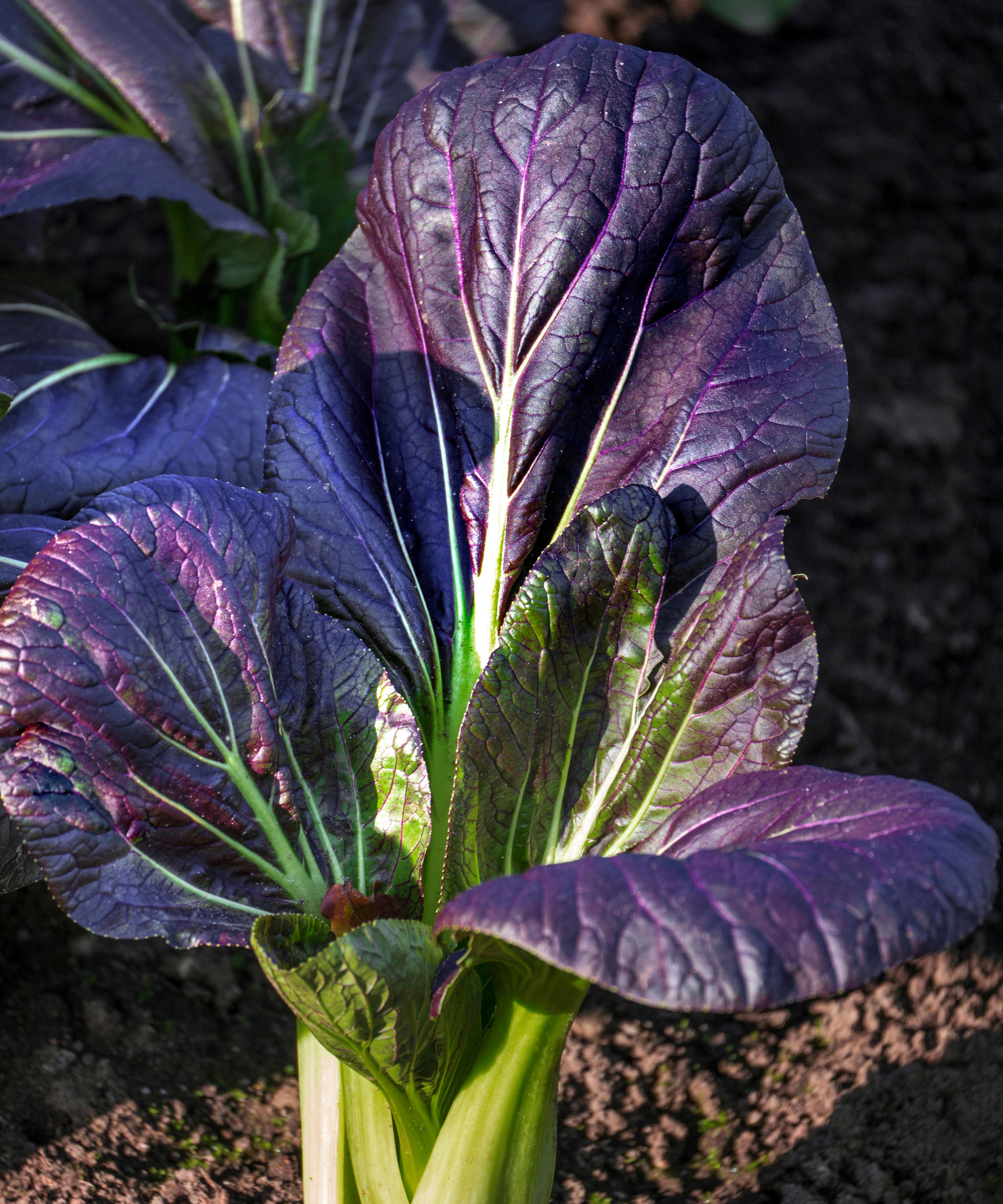
September vegetable sowing list
- Winter salad: Sow salads in 8in (20cm) pots filled with 50% multi-purpose compost and an equal amount of John Innes No2. Scatter seeds thinly over the surface and cover with a thin layer of finely sieved compost.
- Pak choi: A great addition to the veg plot, especially since they do not mind a bit of cold weather. A member of the cabbage family and are easy to grow from seed. They will enjoy the protection of a cold frame or unheated glasshouse, but can also be grown outside over winter, providing you with fresh greens all the way through to spring.
- Blackberries: Of course foraging for blackberries is always fun, but why not grow a couple of thornless cultivars in your garden? They will be right on your doorstep for a last-minute crumble and you do not need gloves to train these canes into ornamental fans that can be used as a plant for fence lines.
September picking list
- Globe artichoke: September is the last opportunity to harvest globe artichokes. Globe artichokes crop more prolifically every year, until the plants run out of energy and need to be replaced. Because of their bold shapes they are good plants to include in a potager garden.
- Rainbow chard: Chard grows better in the cooler spring and autumnal months (they tend to bolt more in summer) and adds some glowing colours to the veg garden. Try ‘Five Colours’ or ‘Bright Lights’ .
- Sloe berries: Pick the fruits when they are dark purple, soft and juicy, traditionally after the first frost. Or you can pop them in the freezer to split the skins before making a lovely sloe gin.
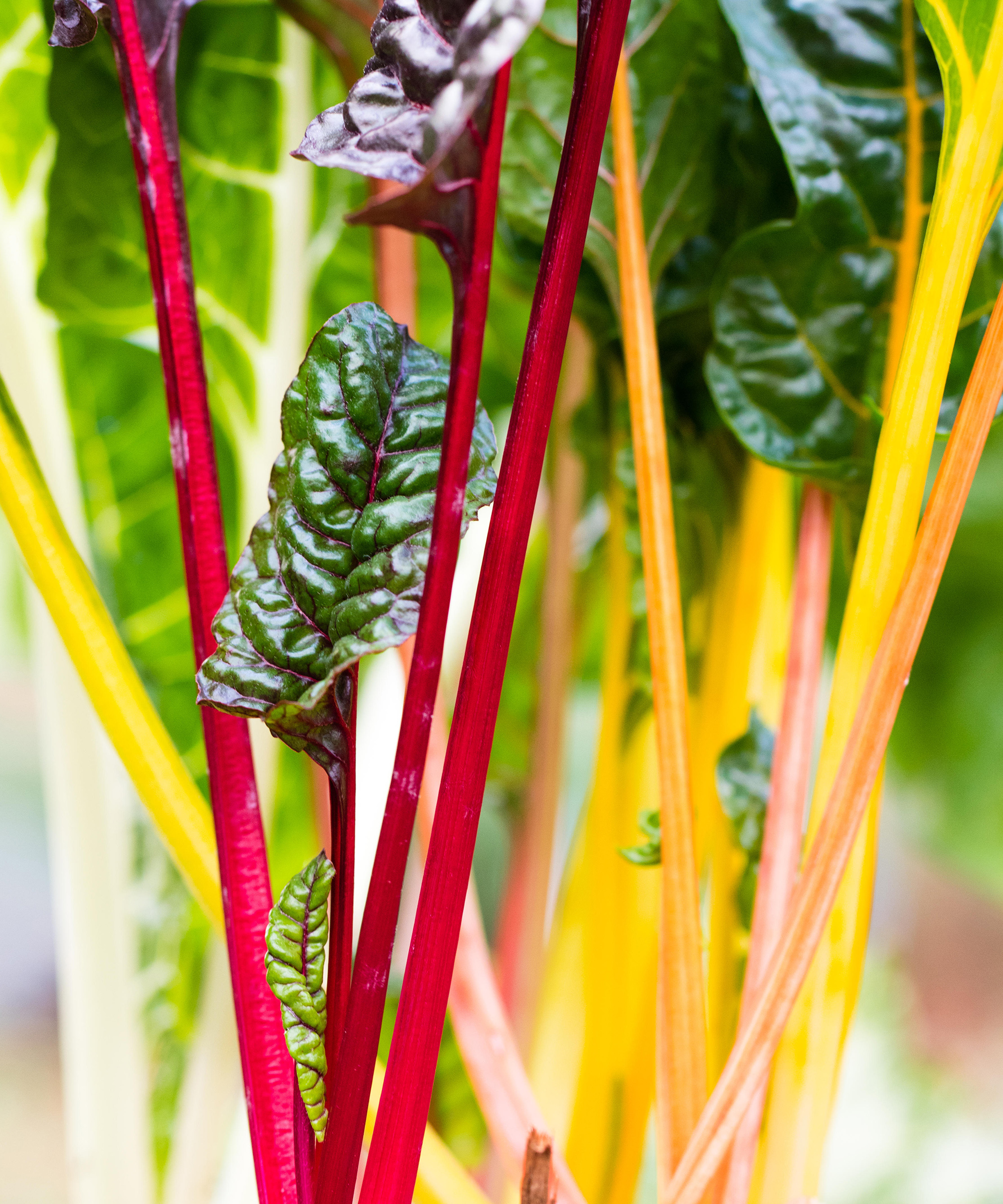
October
With autumn comes the apple harvest, and while some varieties need to be eaten within a few weeks, others like Bramley can last over winter if they are stored in the correct way.
It's also a good time to divide established rhubarb crowns. Doing this every five years will give you strong new plants, helping to keep them healthy.
If you've also learned how to grow pumpkins, this is the prime time to harvest them in time for Halloween and squashes. Winter squashes can be stored for around three months if they are ripened until they form a hard skin.
In late autumn, broad beans are one of the best vegetables to plant in October, but they will need good drainage in the ground.
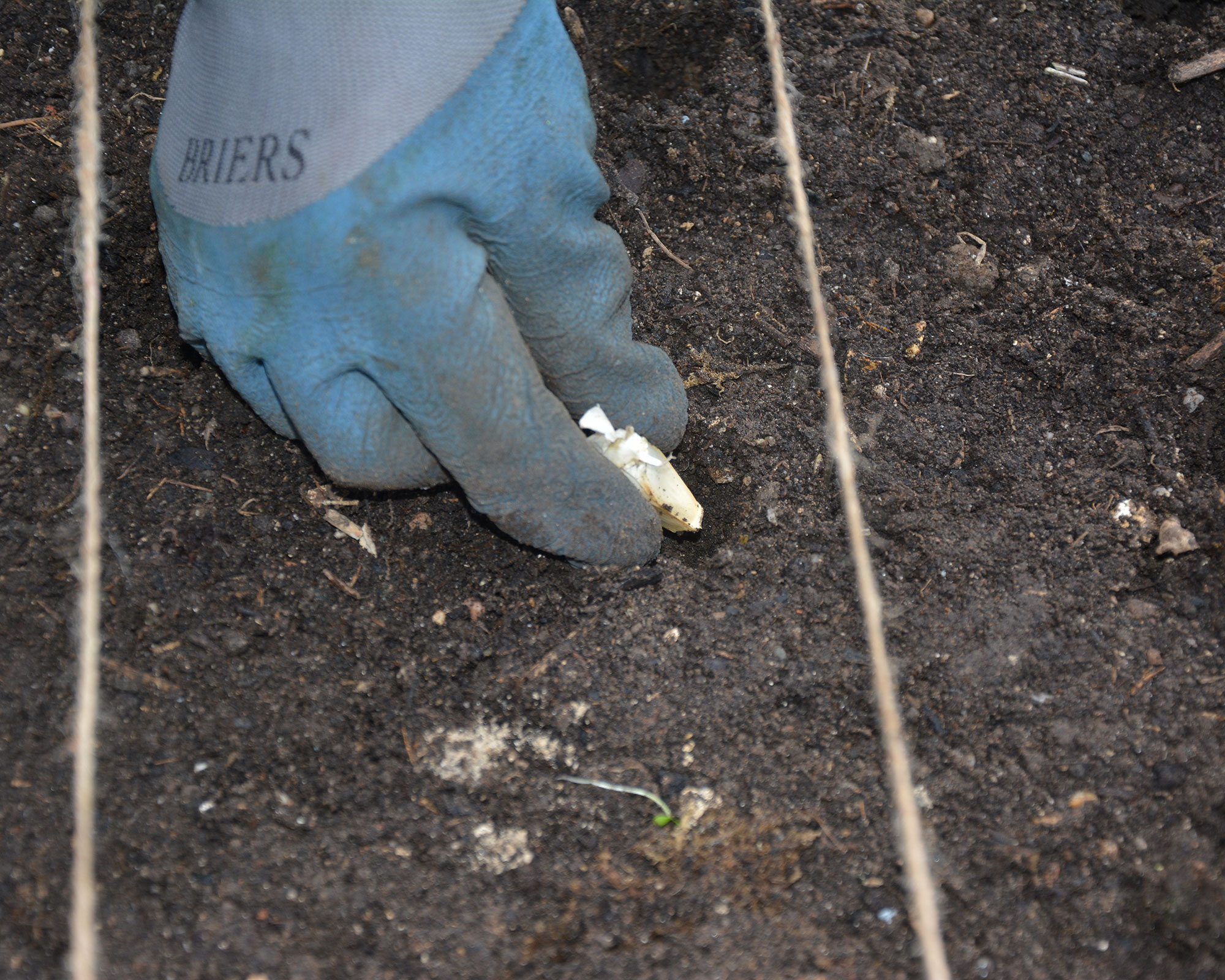
October sowing list
- Microgreens: These do not even require a garden – just a handful of compost! Simply fill a garden planter (even a fruit punnet or a length of gutter) with a bit of compost and sow the seeds thickly on the top. There are so many microgreens you can try, such as red amaranth, basil, arugula and alfalfa. Sow more densely than you usually would and keep moist.
- Garlic: Buy your bulbs specially for planting. When learning how to grow garlic, don’t be tempted to just use the bulbs from ordinary supermarket garlic as the results won’t be as good. Plant the bulbs in the soil, digging a hole about twice their own depth. The pointed end should be facing upwards and they should be positioned no less than 7in (18cm) apart.
- Mushrooms: The best way to learn how to grow mushrooms is from a kit. Once it arrives keep it in a cool, dark place. When the first mushrooms appear, bring the container out. Keep it on a windowsill in a cool, semi-shady position and keep the container moist.
October picking list
- Apples: Apples can start cropping as early as August – check them regularly by lifting a fruit gently with the palm of your hand (do not use the thumb) and if they come off easily, they are ready.
- Pumpkins and squash: Harvest before the first frost. Leave on a sunny windowsill so that the skins toughen for 10 days, then move to a dry, airy place.
- Green tomatoes: The last tomatoes on the vine may be a bit reluctant to ripen, but consider harvesting them for green tomato chutney. That way you are adding something delicious to the store cupboard and freeing up precious glasshouse space for some overwintering greens.
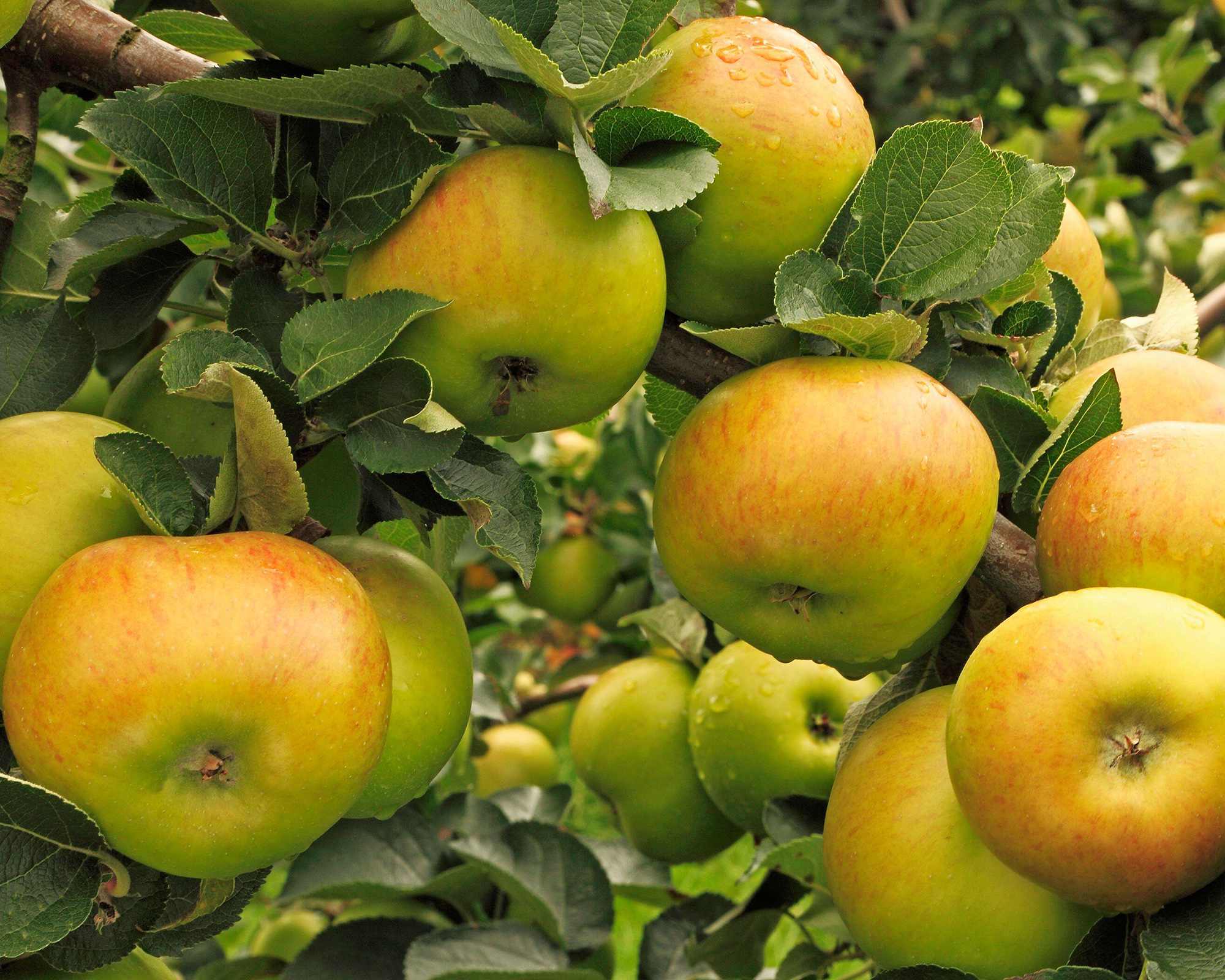
November
Now is a good time to sow garlic sets such as 'Germidour' or Topadrôme'. Other vegetables to plant in November include mushrooms, asparagus and some fruit trees. Choose a sunny but sheltered area and keep young plants well watered. If you've nurtured pots of herbs outdoors over summer, bring them in over winter to give you a continuous supply.
The best time to harvest parsnips is after the first frosts, as this converts the starch in the roots to sugar, giving them a sweeter flavor. It's also time for some autumn pruning of fruited blackberry canes. Cut them back to the ground and tie in new shoots to prevent them from becoming unruly. It's also a good idea to cover vegetable beds with manure so it has time to rot down over winter before planting.
Think about how to get rid of weeds and keep them at bay with a weed suppressing membrane or cardboard or old carpet to prevent weed growth.
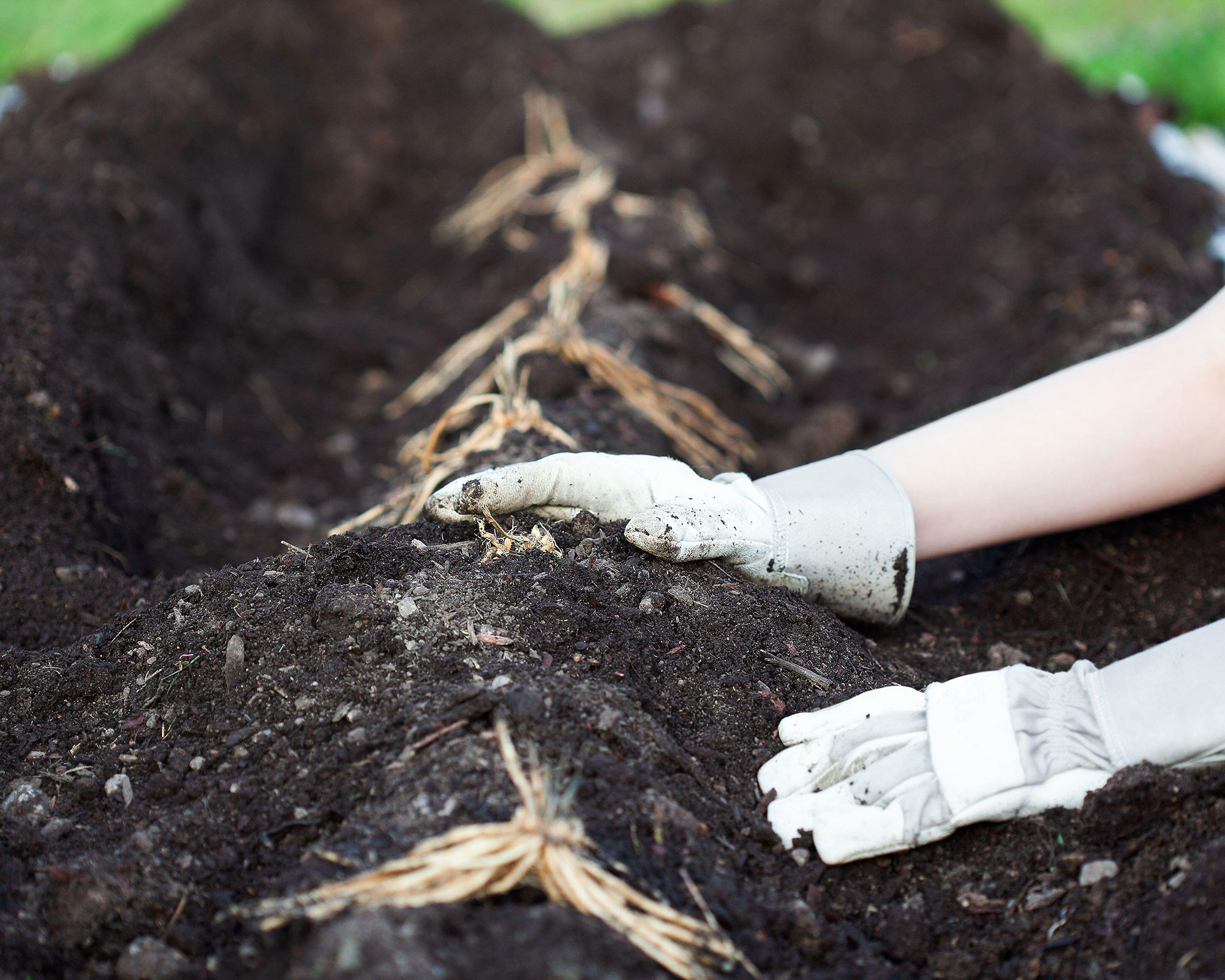
November sowing list
- Pears: November is usually an ideal month to planting bare root trees, as long as the ground is neither too wet nor frozen. Bare root fruit trees will have been field-grown by a nursery, lifted for sale when they are dormant and will be much cheaper than buying a container grown tree.
- Elephant garlic: Make sure you choose a sunny position with good drainage, so that they aren’t waterlogged over winter. Ideally plant cloves at least 8in (20cm) apart so that they have plenty of room to grow.
- Asparagus crowns: Dig a 12in (30cm)-wide domed row, roughly 3in (8cm) deep at the edges, and 2in (5cm) deep in the centre. Sprinkle over a general-purpose granular fertilizer. Spread the crowns out centrally over the dome. Space the crowns at least 18in (45cm) apart, then cover with earth until you reach soil level, gently firming as you go. Water well to settle them in.
November picking list
- Brussel sprouts: Ready to pick from low on the stem, leave those near the top to plump up. Sprouts freeze well for use on Christmas Day.
- Leeks: Harvest from the garden when needed and plants will stay fresh outdoors. Fork from the ground, shake off the soil and rinse well. Mulching the remaining leeks will protect roots and make them easier to harvest in winter.
- Jerusalem artichoke: Once the foliage turns yellow, cut down the stems and use a fork to remove all of the tubers during the winter months for roasts, soups and more.
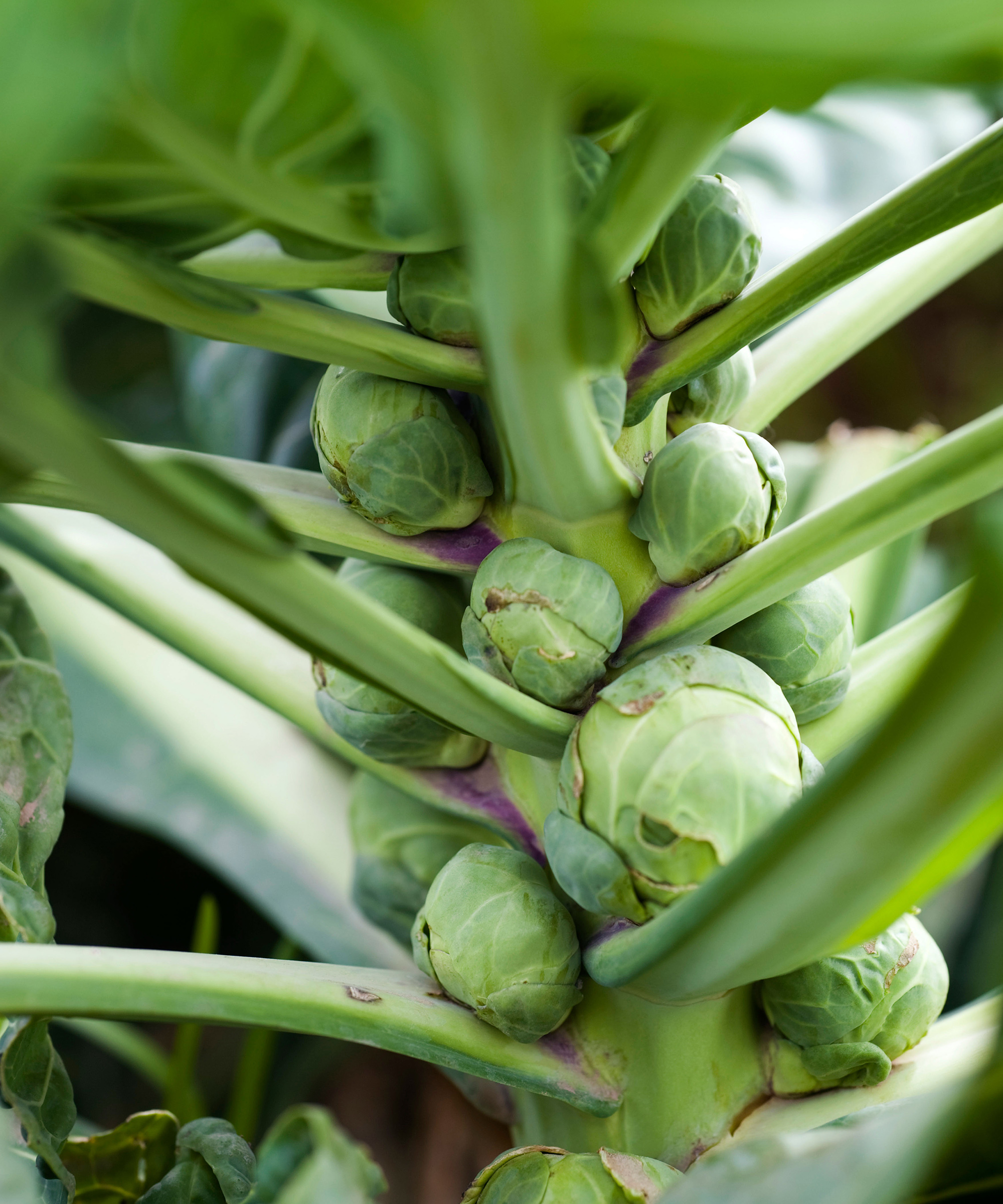
December
Start to plan your vegetable garden for next year. Make a note of what you planted where this year so that you ensure good crop rotation to avoid pests and diseases. Order your vegetable seeds and soft fruit bushes now to get a head start with next year's vegetable planting calendar.
You can still sow certain seeds outside if the conditions are right. Mustard greens, lambs lettuce and ‘Winter Gem’ can be grown outside in a cold frame or unheated greenhouse. Broad beans are also a vegetable to plant in December and their seeds can be planted directly in the ground but keep fleece or a cloche handy just in case. If you live in an area with a mild climate you can plant garlic sets outdoor as long as the soil is well-drained.
December can be a little lean when it comes to the amount of fresh produce available but the best winter vegetables step in to fill the gap. Choose from cabbages (both white and savoy), leeks, leafy greens like kale, chard, cavolo nero and perpetual spinach, as well as purple sprouting broccoli, winter lettuce and parsnips. Be sure to cover winter brassicas with netting to protect them from pigeons.
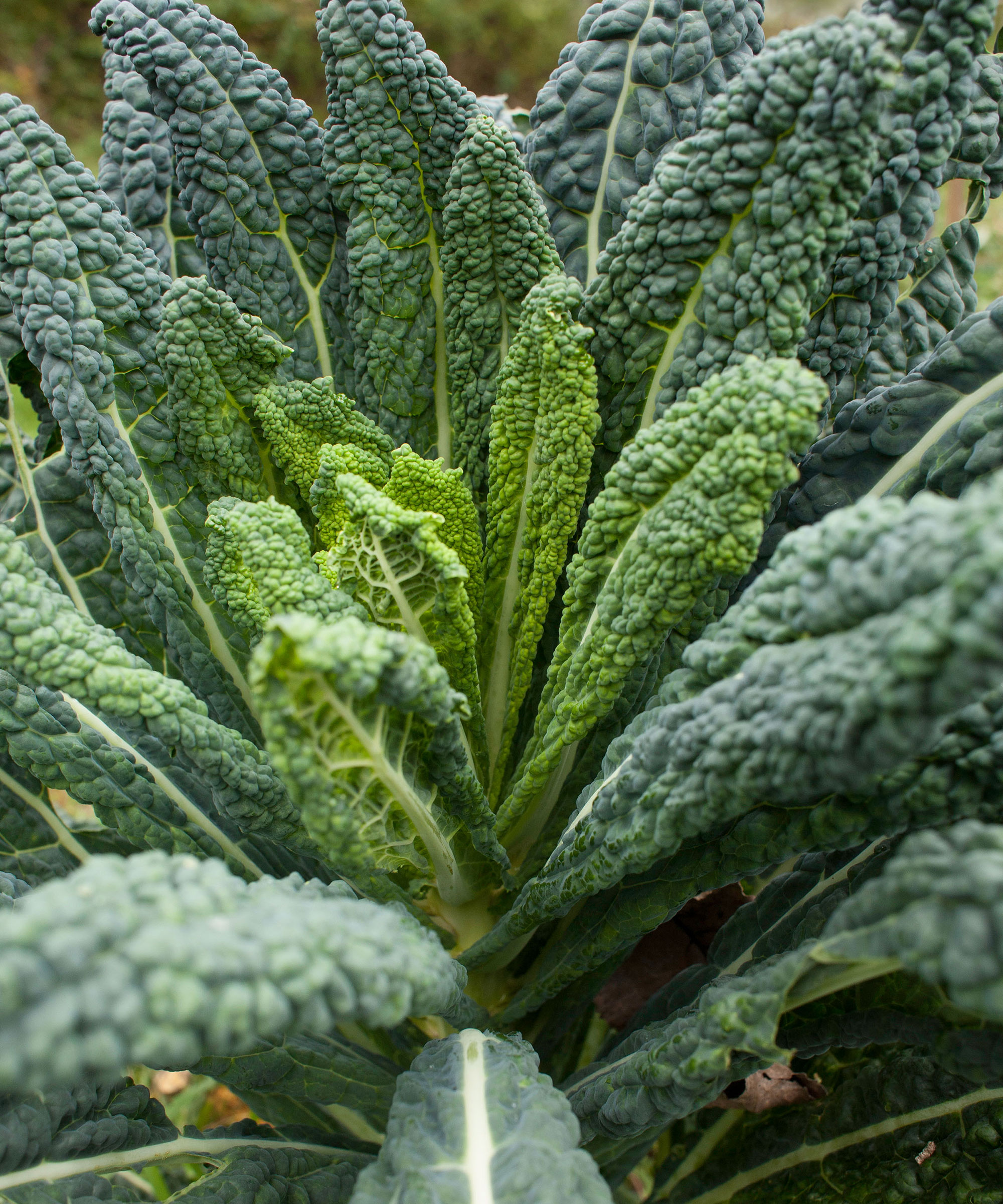
December sowing list
- Onions: For show-stopping onions next year, get a head start by sowing ‘Mammoth’ or ‘Ailsa’ this month. Sow into trays of good seed compost and place in a heated propagator or cover with a plastic bag to encourage germination. Transplant into individual pots and plant out in the spring.
- Lettuce: Sow salad leaves indoors into module trays and grow on the windowsill, in a conservatory or greenhouse. Many seed companies sell a winter mix of ideal leaf varieties to keep a successional supply going. Individual types to try include mustard greens, loose leaf lettuce and lamb’s lettuce. Provide ventilation on fine days to prevent mould.
December picking list
- Winter herbs: Whether you grow them in pots or plant them directly into free draining soil, the likes of sage, rosemary, thyme, bay and parsley will keep on bearing leaves for the kitchen all winter long. Opting for the best herbs to grow indoors is a great idea for easy winter harvests.
- Root vegetables: Any carrots must be lifted, but swedes and parsnips can be left in the ground until needed, or wait to pick fresh on Christmas Day. Cover them with straw to prevent the ground freezing and roots will be easier to pull.
- Kale: The harvest is still in full swing. Kale can be treated as a cut-and-come-again-crop. Harvest leaf by leaf or snip top tender leaves with scissors, leaving the plants in the ground. There's more tips on how to grow kale in our guide.

What month do you plant vegetables?
The vegetable planting calendar runs all the way through from January to December. However the amount that you can plant over the winter falls away. Winter salads, garlic, and onions can be sown in heated propagators over December and January.
In the fall there's lots to harvest, like apples, pumpkins and squash, but there's also some vegetables, like broad beans and spring cabbage, which benefit from having the autumn and winter months to develop for a spring harvest.
Spring is really where you see the list of vegetable to plant start to lengthen. Everything from aubergines, peppers, courgettes and carrots can be sown in a greenhouse from March. Then as the soil starts to warm up even more, plenty can be sown directly into the soil around April and May like spinach, peas and courgettes.
Summer is when you'll be rewarded with the fruits of your spring sowings but you can keep planting quick growers like radish and beetroot to keep your stocks going.
When should tomatoes be planted?
If you're growing from seed, tomatoes can be sown in a heated greenhouse from late February to March. If you don't have a greenhouse you can sow yours in your home on a windowsill from late March to April. They won't take long to germinate and then they'll be ready to plant outside.
Amateur Gardening expert Camilla Phelps advises: 'Pot on seedlings once they have three to four leaves, then harden off and move young plants outdoors in late May. Plant out into beds or containers filled with plenty of well-rotted, peat free compost; or use a growbag. Support larger plants with canes, and keep tying them in as they grow.'
Bush varieties don’t need to be trained up canes – you can grow them in a hanging basket or patio pot.
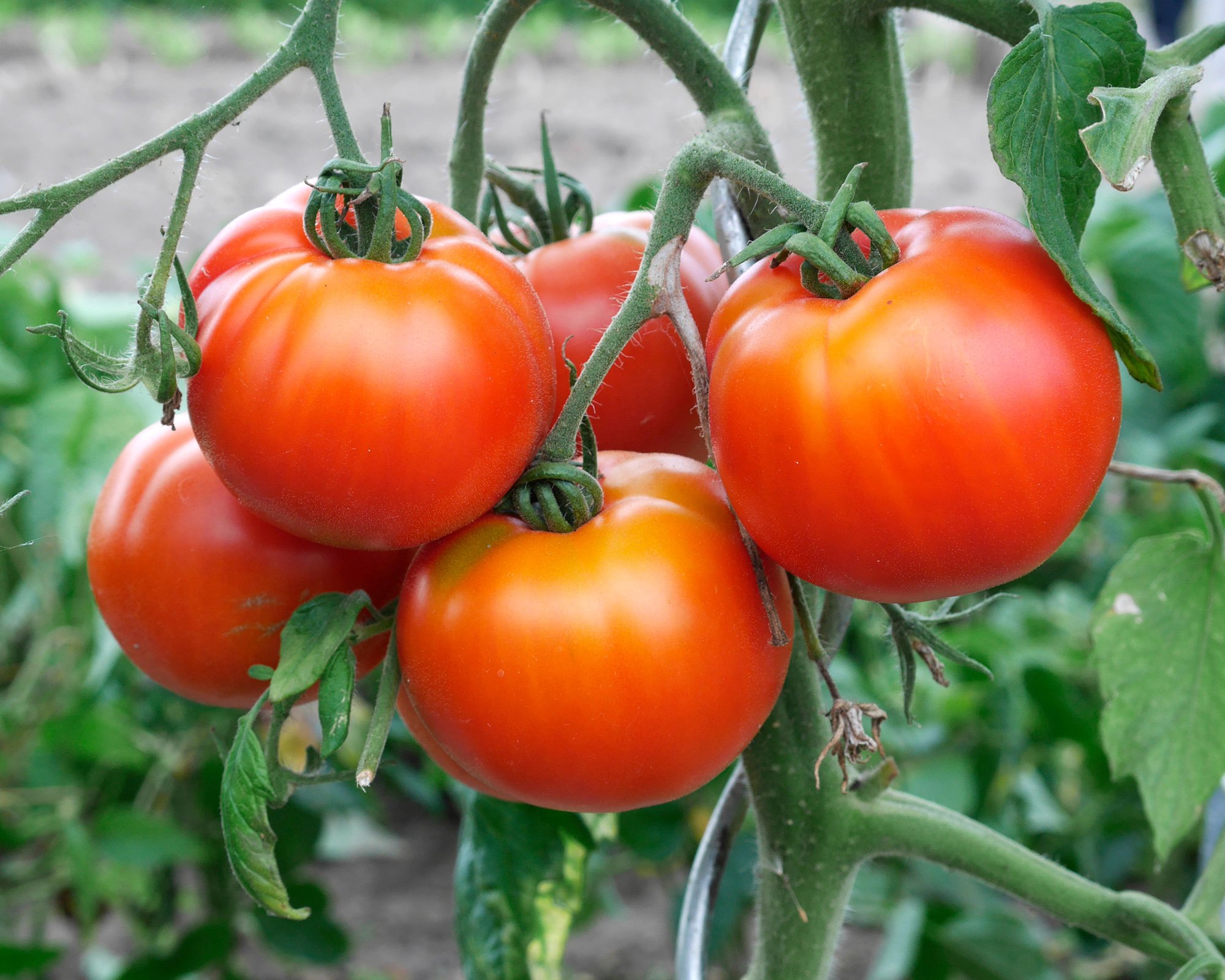
When should cucumbers be planted?
Late February and March is the time in your vegetable planting calendar to crack on with planting cucumber seeds. Lucy Chamberlain, gardening expert for Amateur Gardening advise: 'Although tender, cucumbers can be sown early because many varieties (though not all) can take a couple of weeks to germinate and indoor types will be cropped in a frost-free greenhouse. Fill some 3.5in (9cm) pots with good-quality seed compost.
Water the pots well and allow them to drain. Sow one seed per pot, 2cm deep, covering each seed over with compost. Water the pots lightly and then place in a well-lit propagator set at 22°C/71°F. Keep just moist and ventilate the propagator well once germinated.'
Add some companion plants for cucumbers to your plot to give your crops the best chance of success too.

Teresa has worked as an Editor on a number of gardening magazines for three years now. So she is lucky enough to see and write about gardening across all sizes, budgets and abilities. She recently moved into her first home and the garden is a real project! Currently she is relishing planning her own design and planting schemes. What she is most passionate about when it comes to gardening are the positive effects it has on our mental health to grow and care for plants, as well as being great for the environment too and help provide food and shelter for wildlife.
